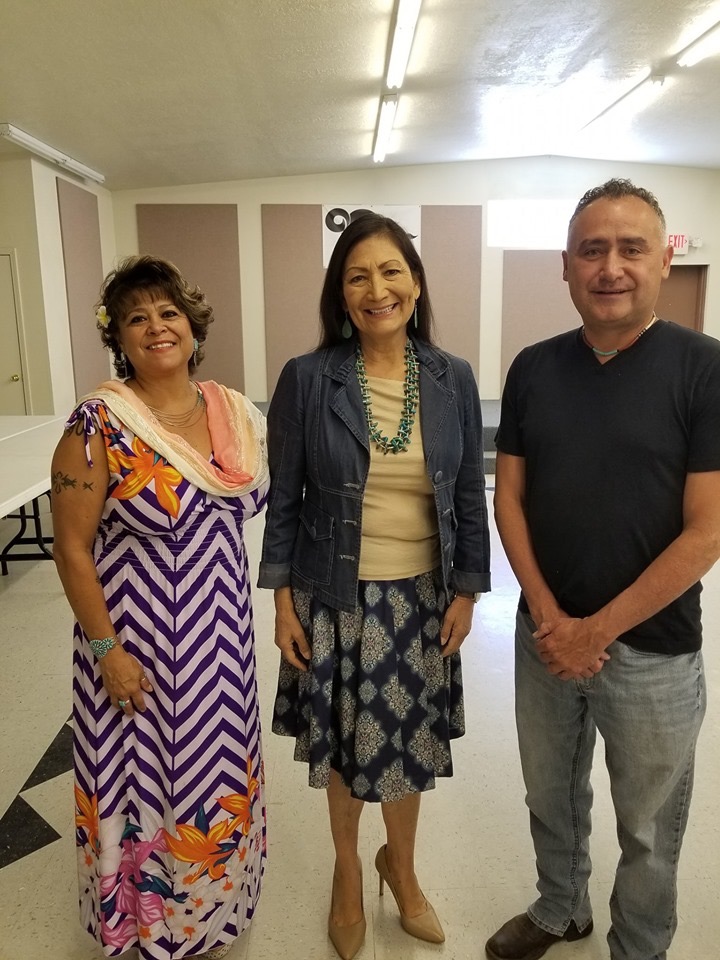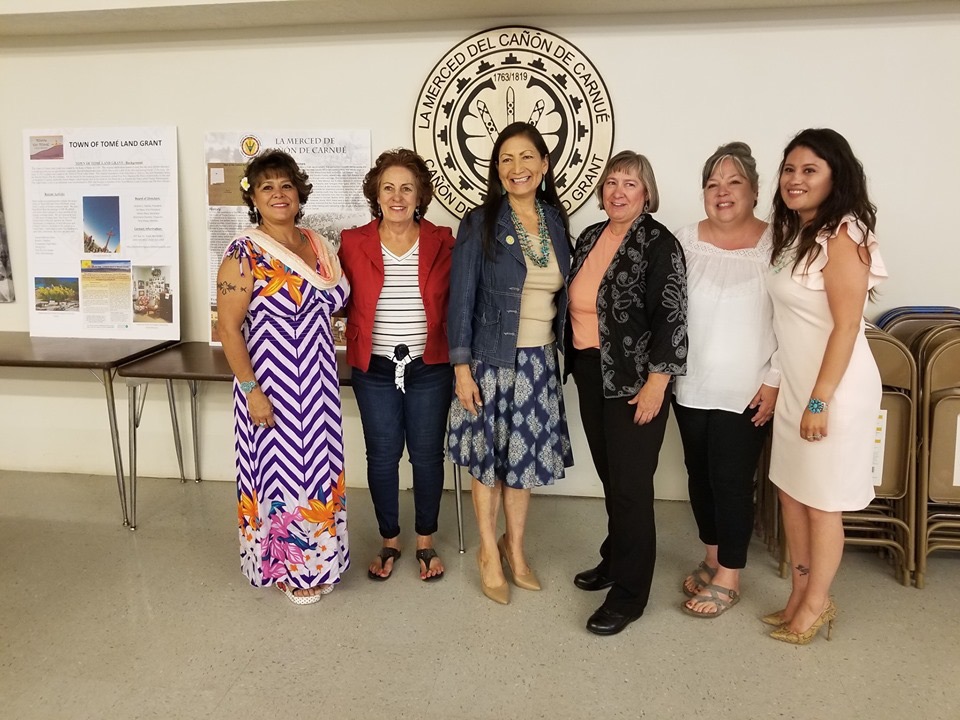Two members will be elected to the Board of Trustees on April 30, 2022.
Voting will be at the Land Grant Hall between 11:30 and 1:30 pm.
Please see the Election Proclamation, below.
Two members will be elected to the Board of Trustees on April 30, 2022.
Voting will be at the Land Grant Hall between 11:30 and 1:30 pm.
Please see the Election Proclamation, below.
Join Editors and Authors at this special event, hosted by UNM Press at UNM! Bring your copy of the book to be signed, and listen to the history and stories!
Friday Dec 5, 6pm, Pearl Hall Auditorium, School of Architecture & Planning, UNM
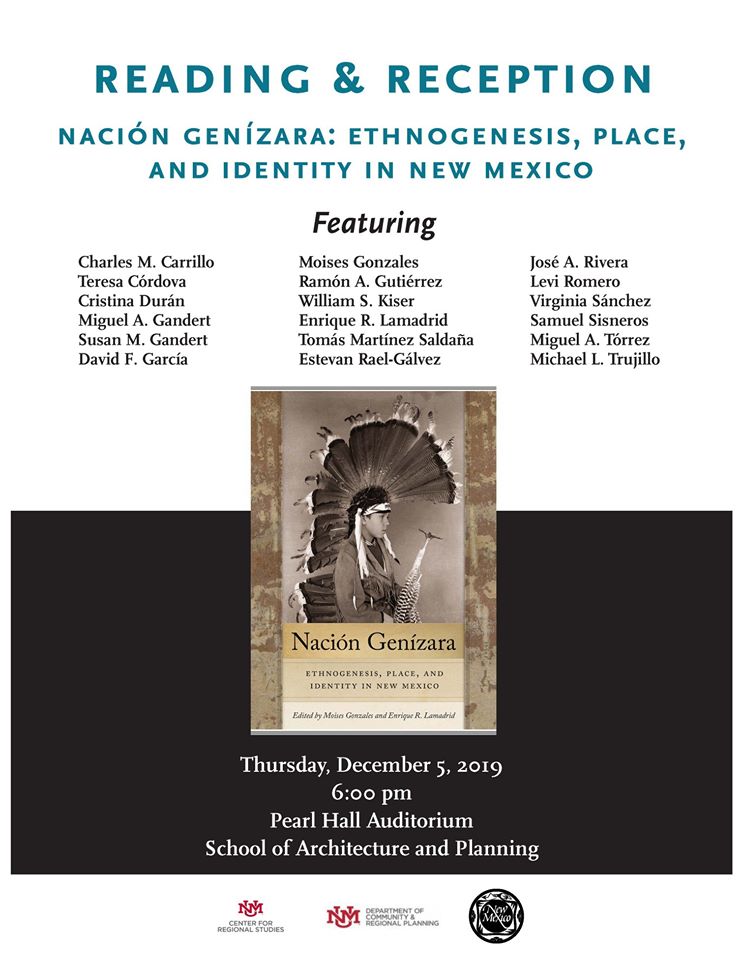
‘Ethnogenesis, Place and Identity in New Mexico’
This excellent book has just been published, and examines the history, cultural evolution and survival of the Genízaro people in New Mexico and Southern Colorado.
This is the first study to focus exclusively on the detribalized Native experience of the Genízaro in New Mexico. Order now from UNM Bookstore, UNM Press or click here to order on Amazon!
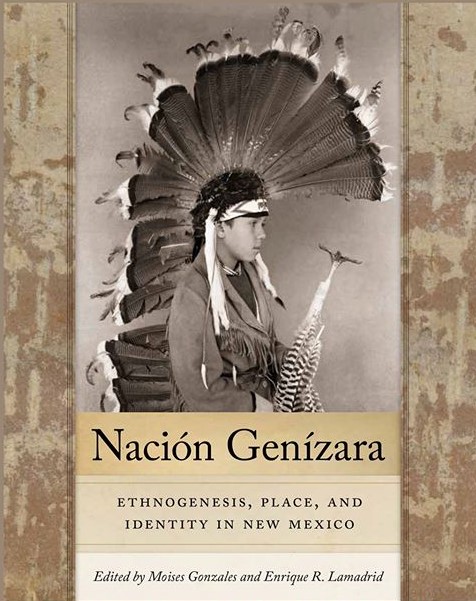
Join the Genízaro Nation Community Forum Facebook Group, and enjoy the stories, news and learn more about the lives of other Genízaro’s in the state of New Mexico and in Southern Colorado. Click here to reach the Genízaro Nation group!
The complete agenda is available for this wonderful conference – come and discover stories and history that have influenced the development of our Genízara Culture, across the Southwest.
The Danzante tradition continues, as we experienced during the recent dance practice held at the Canon de Carnue Land Grant Hall, in July. Cosponsored by the Canon de Carnue Land Grant and the UNM Land Grant Studies Program, the event succeeded in giving 16 new potential Danzante youth an exposure to the steps of the dance, the music and the meaning of the head-dress, the palma and the guache (rattle).

Attending the performances at the Fiestas is a well-established way for young potential Danzantes become familiarized with this special aspect of their cultural heritage. At their first Fiesta in 2018 in Carnuel at the Santo Nino Mission Church, my young granddaughters who were then (4 & 5 years old) reacted immediately to El Toro (the bull, who let them touch his horns and then snorted at them to their delight!), El Abuelo (the grandfather, with his whip and lasso), La Perejundia (the comic and provocative old lady, with the bag of candy) and La Malinche (the young girl wearing the coveted MOST beautiful dress!). The antics of the afternoon performance resonated with them, and since then we have attended more Fiestas. When we watch videos of the processions and performances, they are captivated and respond rhythmically by nodding their heads.
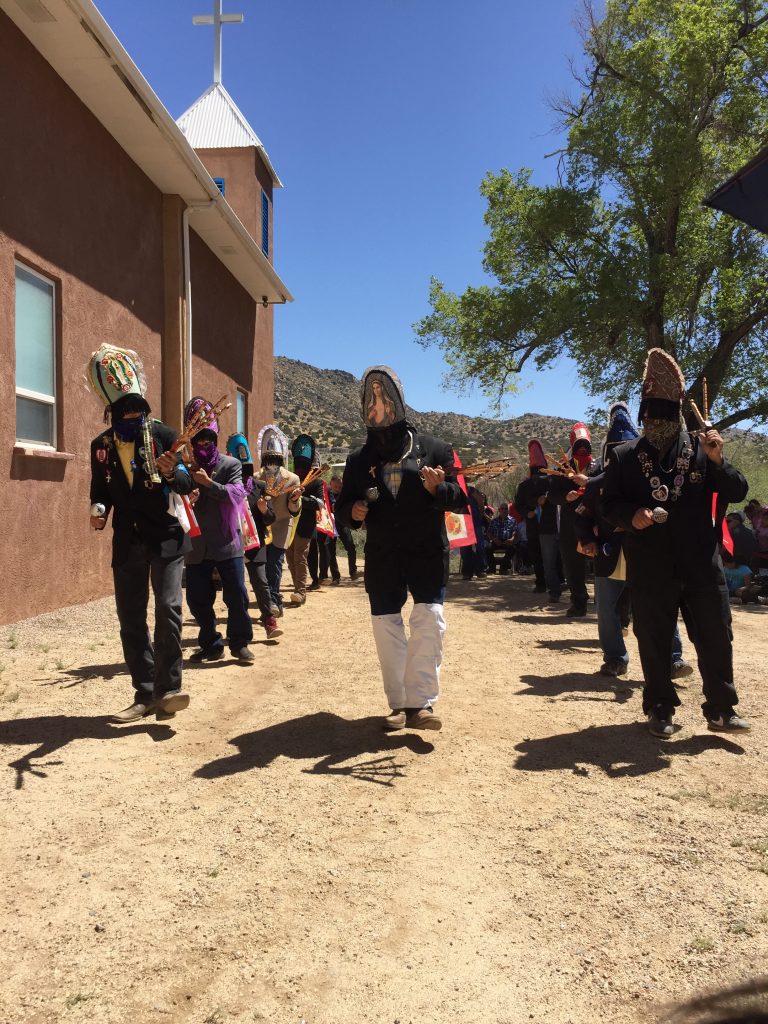
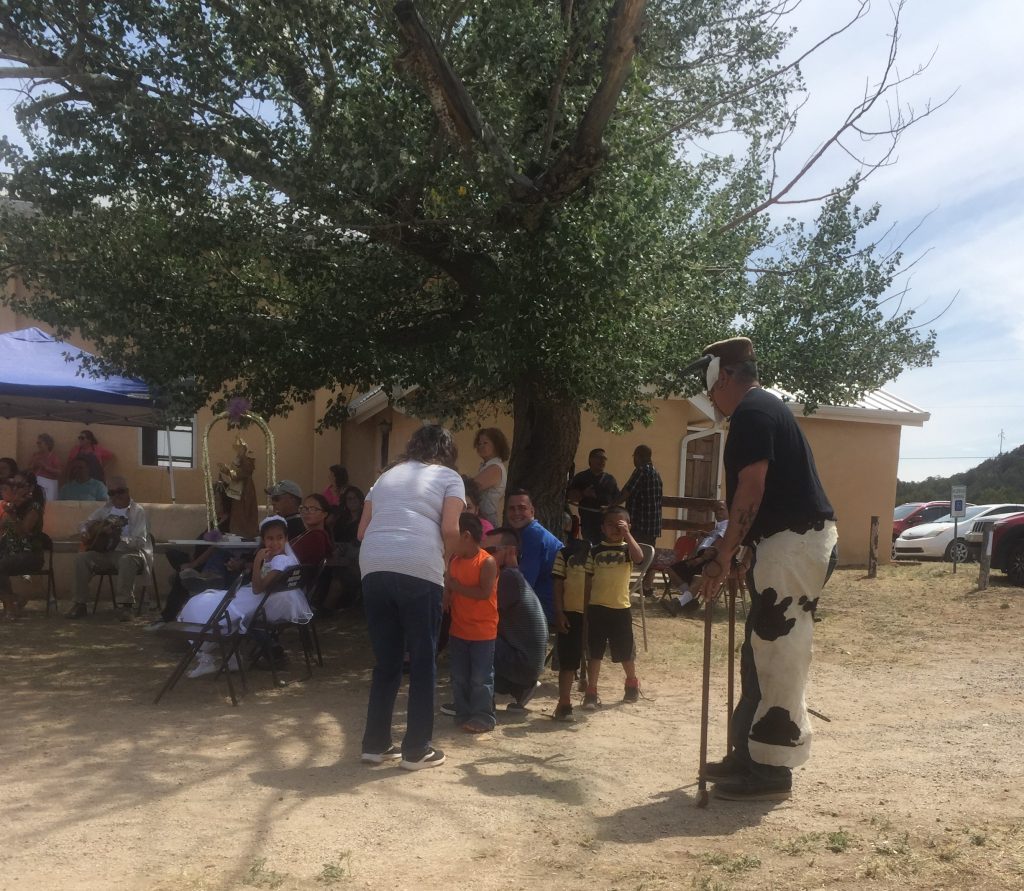
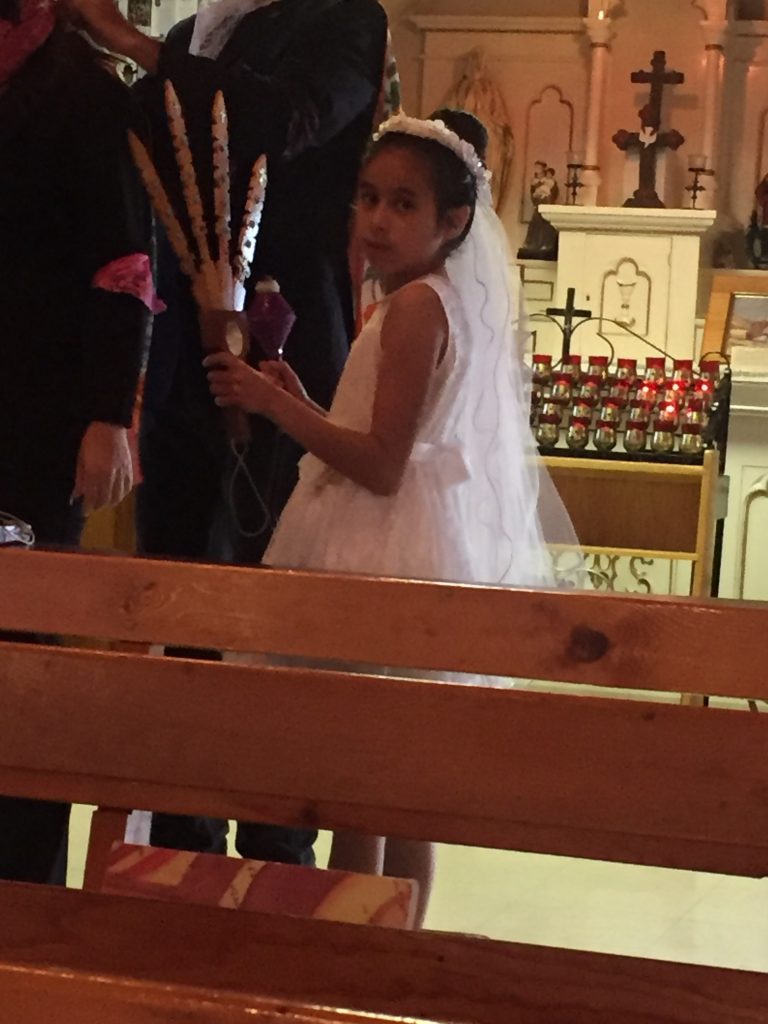
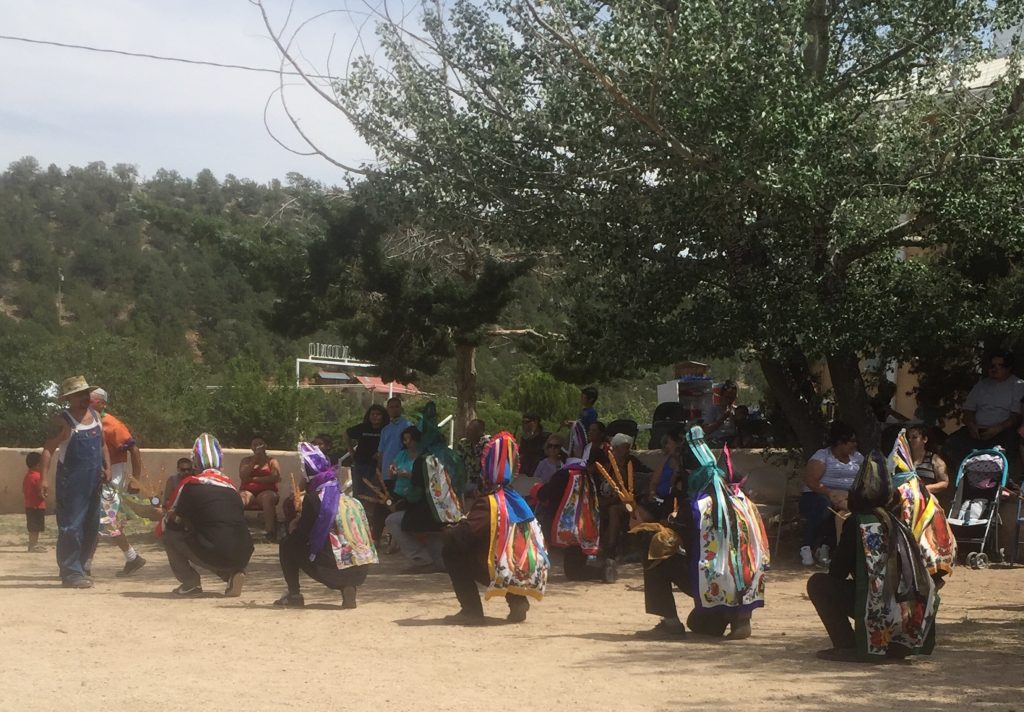
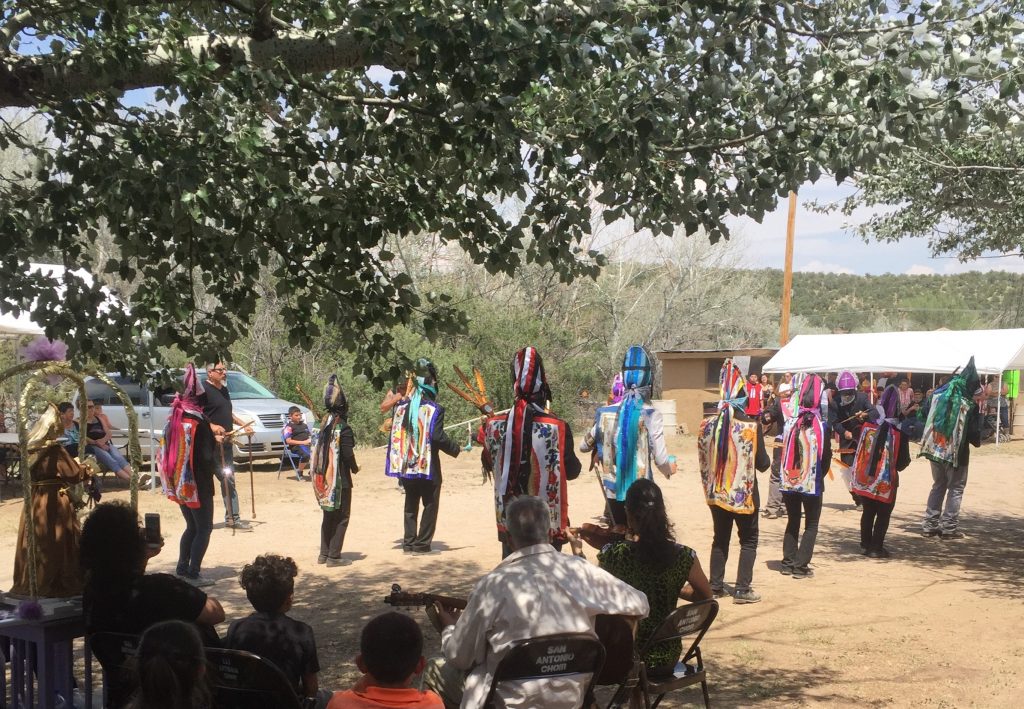
Little did I know until their first Fiesta in 2018 that my granddaughters’ paternal Grandfather, Lee Arnold Griego had been a long-standing Danzante until his tragic passing in 2014. I do have a wonderful recollection of the impressive and meaningful procession of the Matachine Danzantes at his rosary in the Holy Child Church in Tijeras, however I didn’t realize that it was a special honor performed for Danzantes who have passed away.
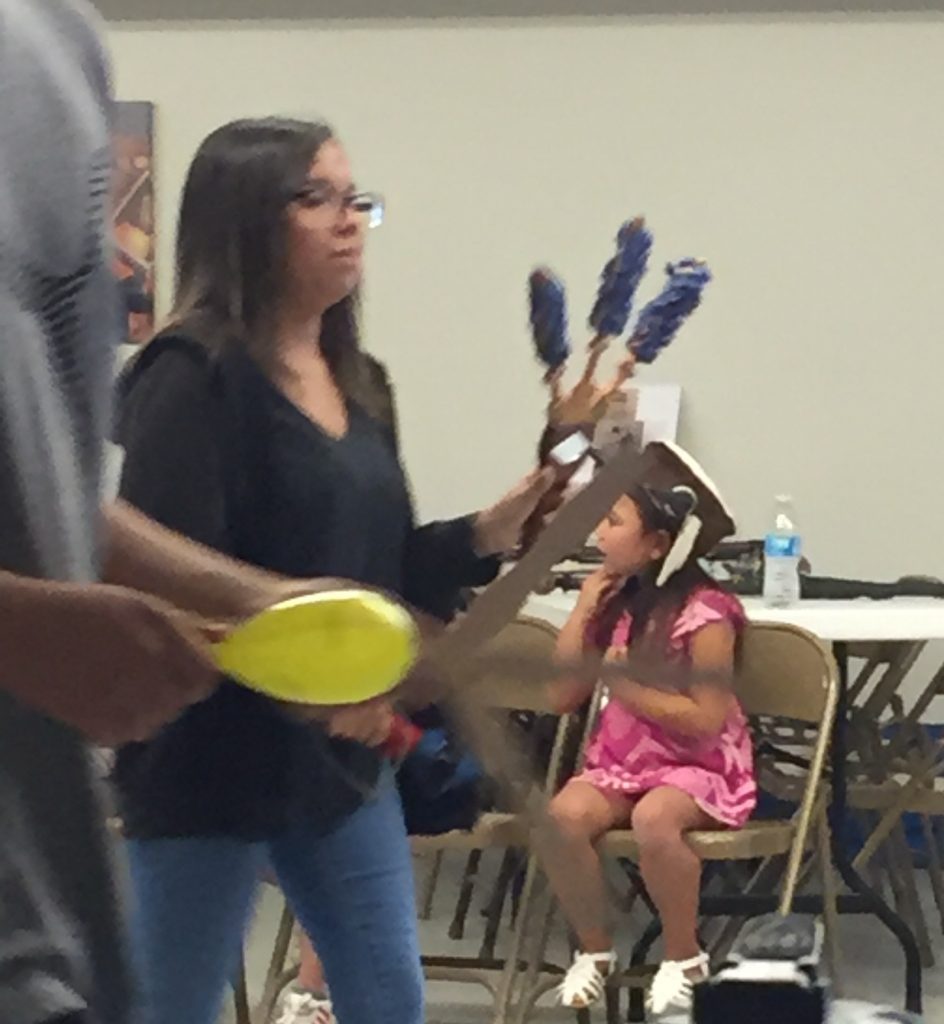
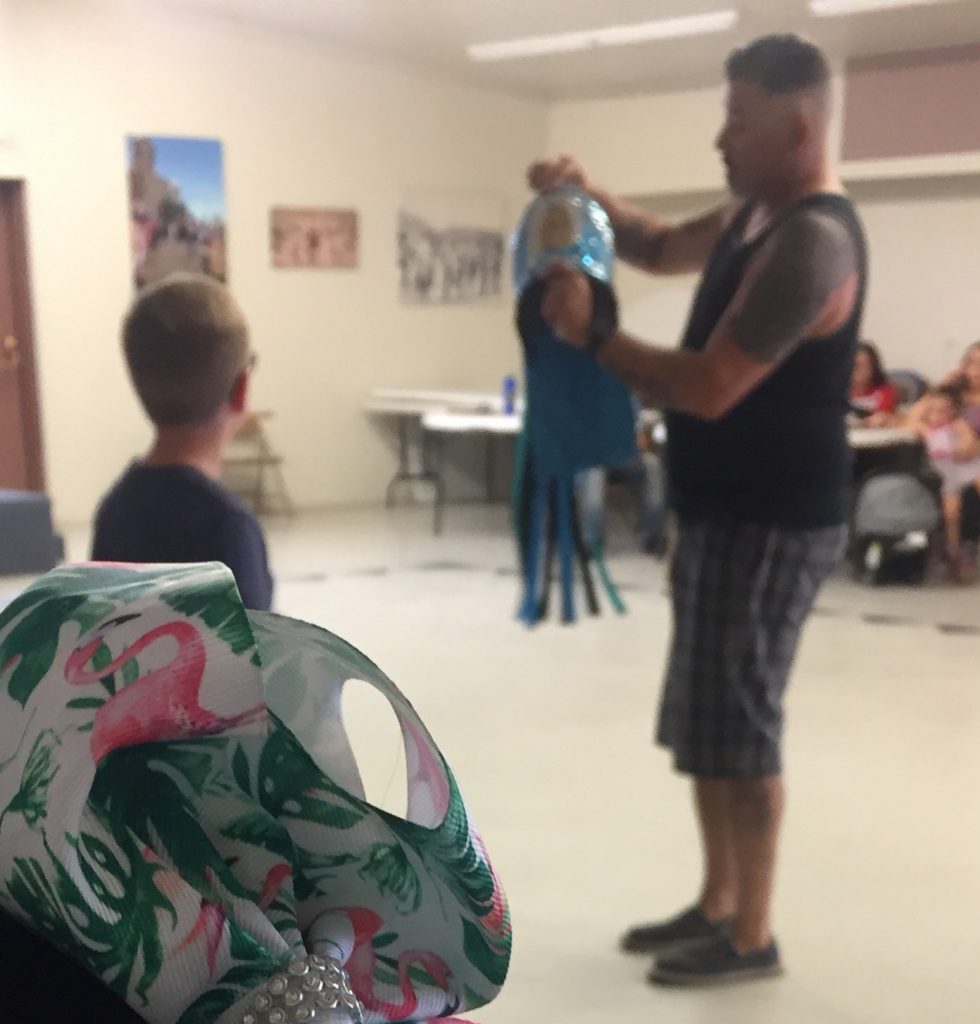
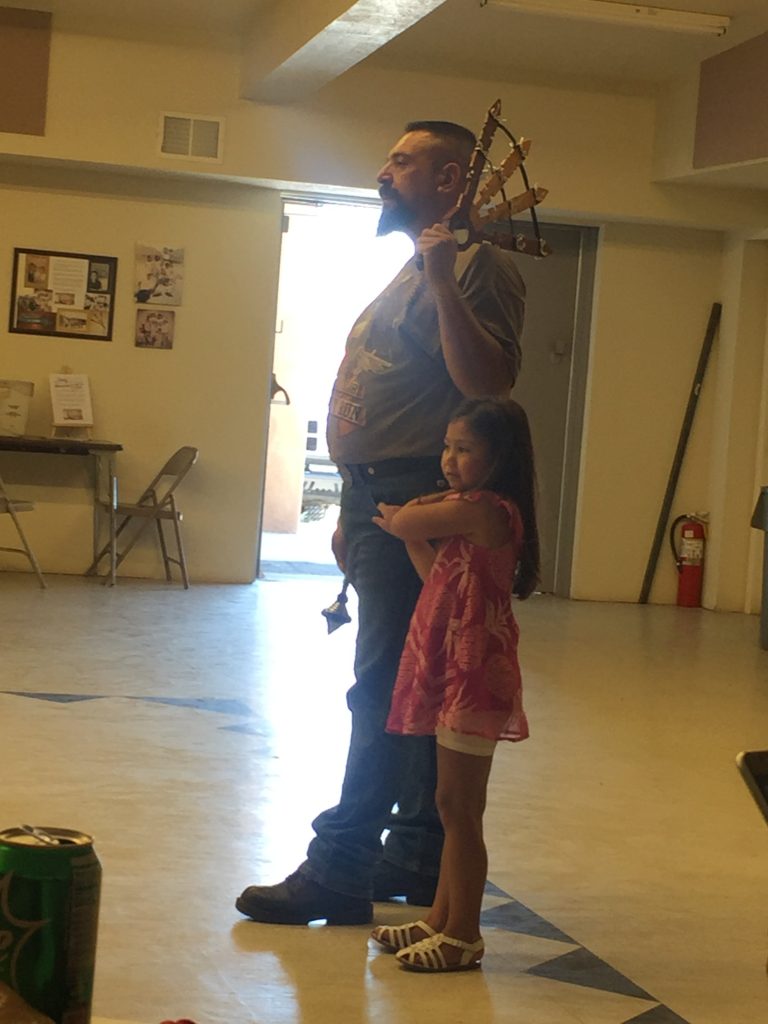
The dance practice my granddaughters attended in the Land Grant Hall was well organized, with the little future Malinches (cousins, by the way!) sitting together on the side, watching and taking turns as the dancing was rehearsed. I was so surprised to see my youngest granddaughter wearing the head-dress of El Toro, and then later playing with the lasso and then the whip! What good-natured mentors the leading Danzantes are to tolerate such antics!
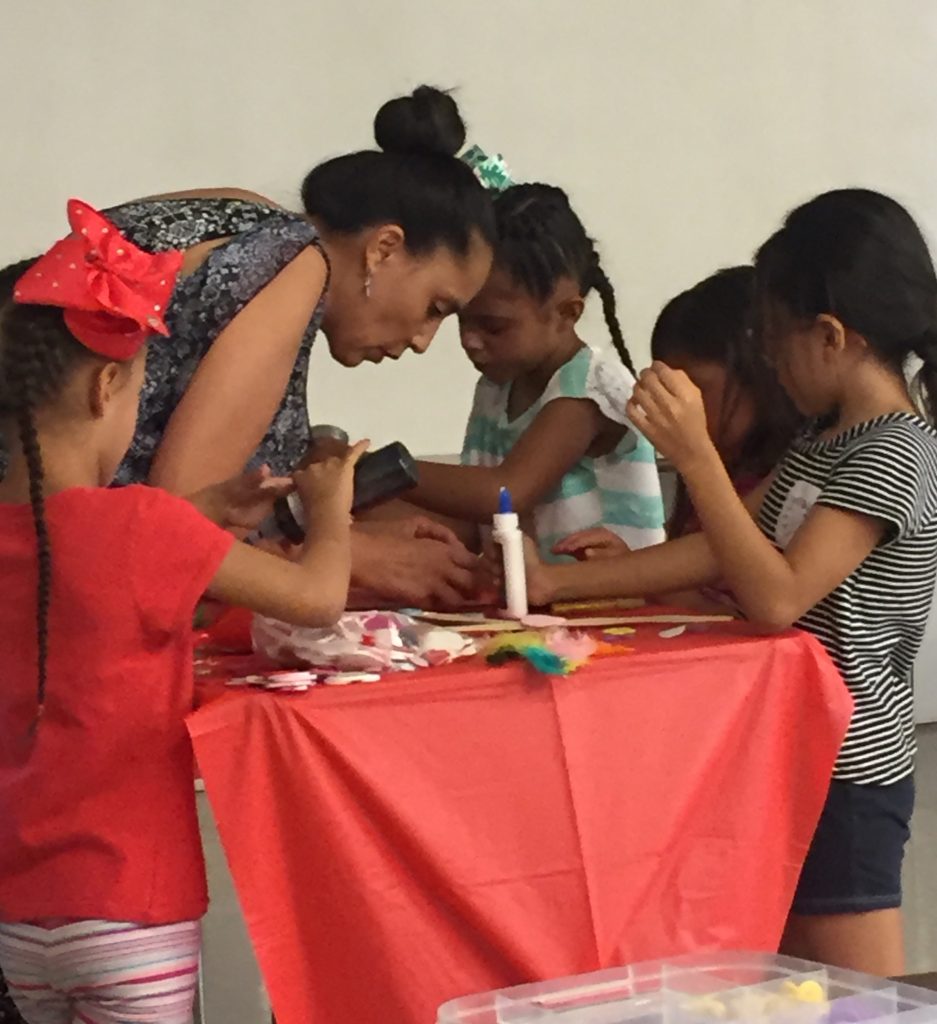
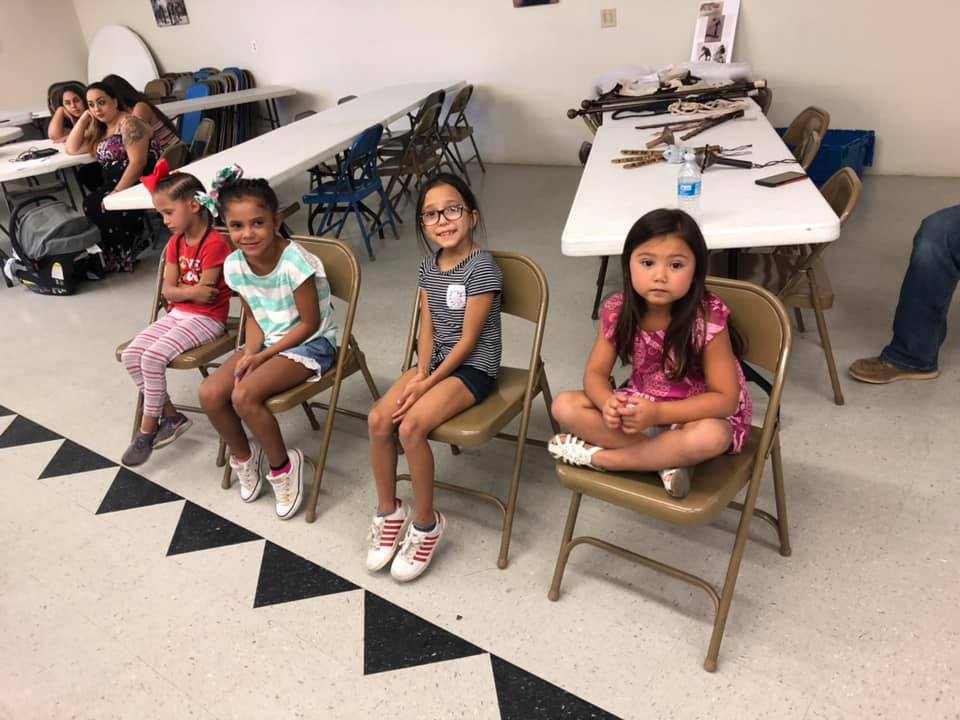
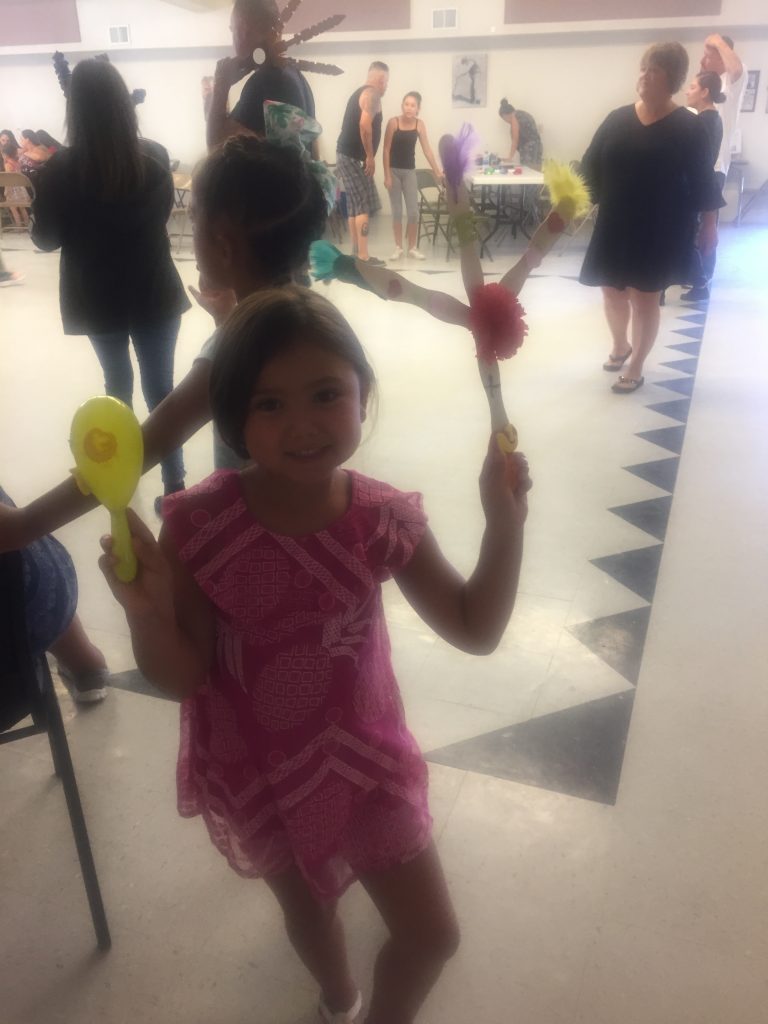
The chance to make and decorate their own palma, and guache (a plastic maraca) was a further enhancement to the whole experience. The little future Malinches were completely engrossed in gluing, painting and selecting flowers, feathers & hearts for their palmas, thanks to Venessa Chaves Gutierrez (UNM Land Grant Program), who co-organized the event with Moises Gonzales, the Canon de Carnue Land Grant President (who is a Danzante). The children’s snacks provided were very popular as well, helping recharge the teens in between the dance sessions.
Nurturing this tradition is meaningful to the Danzantes, as well as to families who enjoy the Church and Fiesta performances throughout the year. Even those of us (like myself) who were not raised with this traditional experience, can recognize and appreciate the important feelings of belonging, reverence and community these experiences provide to our children and grandchildren.
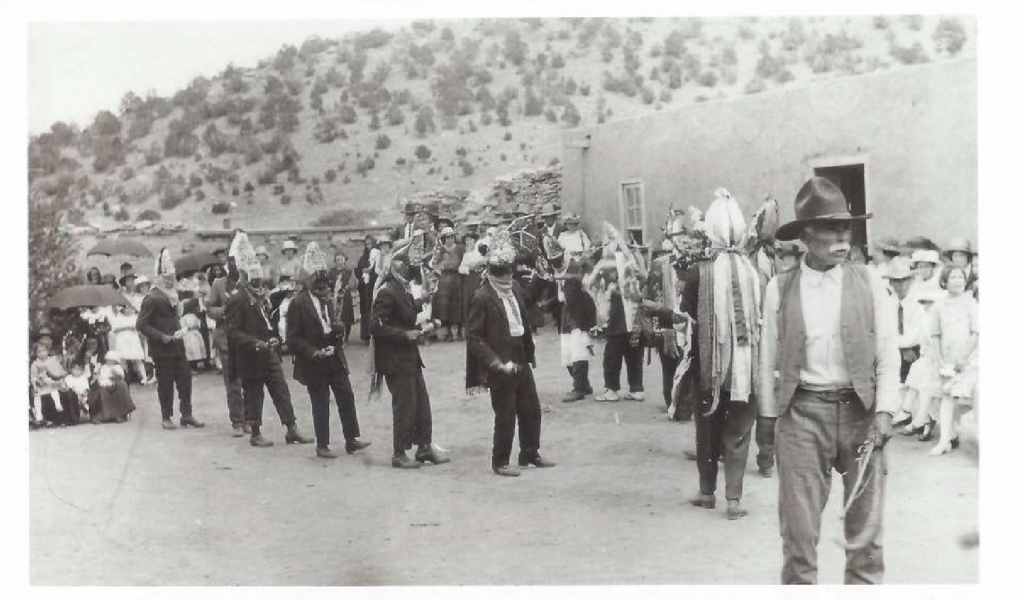
Story by Susan Olsen, July 2019; pictures by Susan Olsen and Venessa Chavez Gutierrez
Our young granddaughters are heirs of settlers of the Canon de Carnue Land Grant. We want them to know about their heritage, to love and to be proud of it. In July of this year we took our granddaughters to a wonderful event that was organized by Rebecca Correa Skartwed, of the San Antonio de Las Huertas Land Grant (east of Placitas) and Venessa Chavez Gutierrez of the UNM Land Grant Studies ‘Youth Vision’ Program.
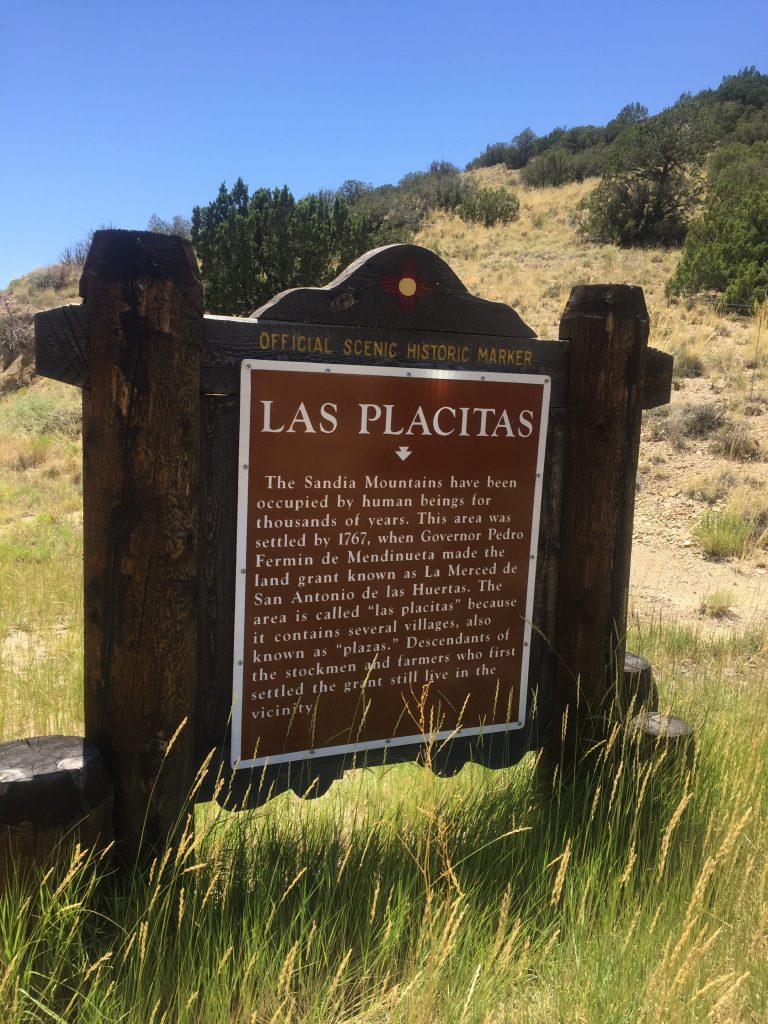
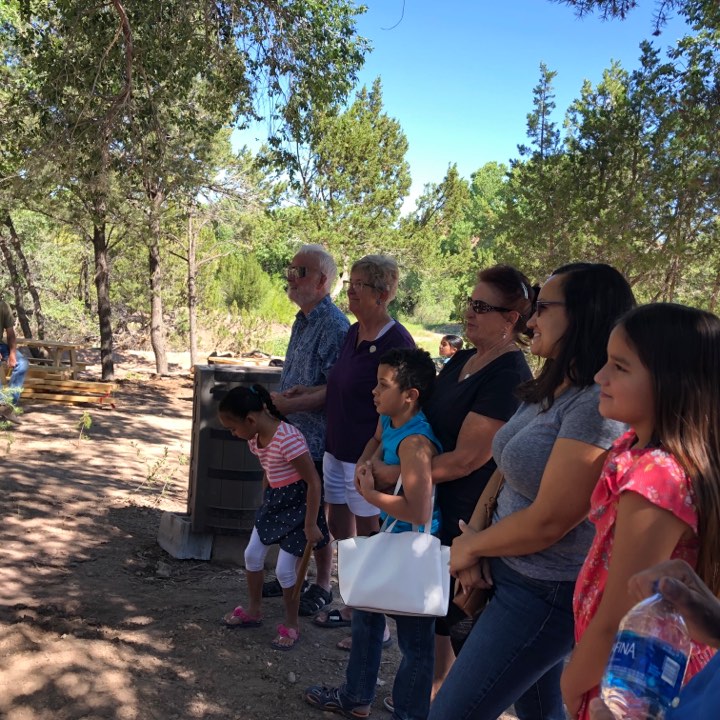
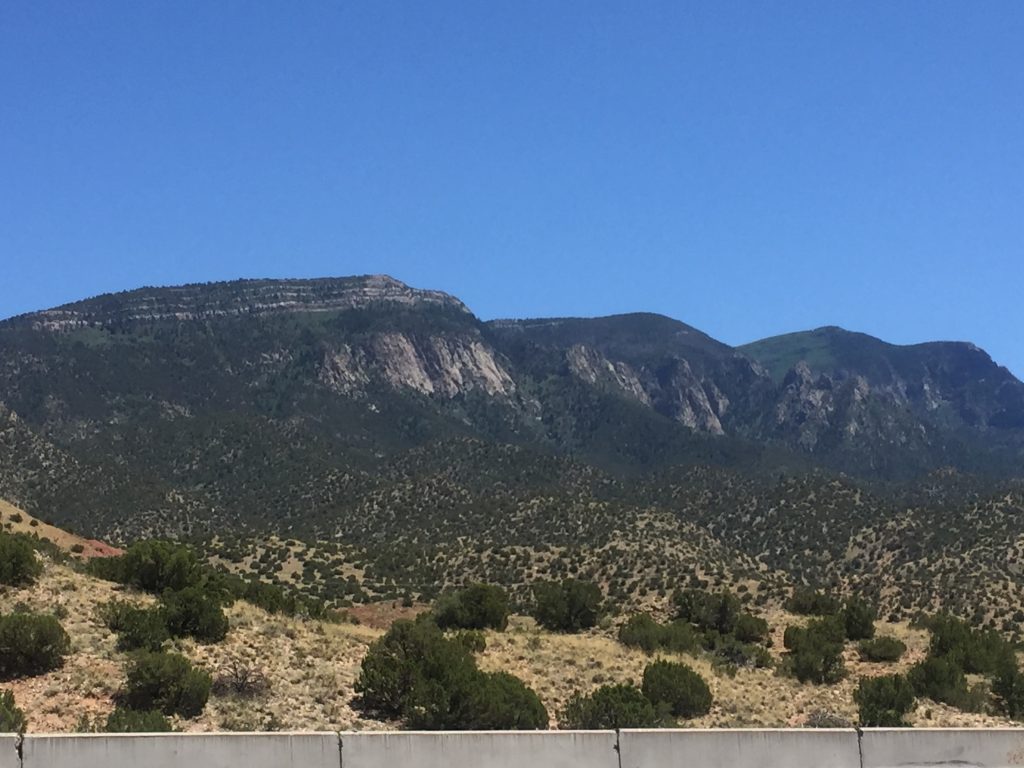
We started by learning to roll out flour tortillas, and thanks to Sandy Escarcida’s instruction, we discovered big differences between the food eaten around the time of the founding dates of each of the Land Grants represented by those attending, as compared to the New Mexican food we are all familiar with (burritos, enchiladas, etc.). The children loved rolling out tortillas, guided by Ora Correa (Rebecca’s mother) and Sandy, who then cooked them on the griddle in the outdoor kitchen. Our reward was sampling freshly cooked, warm tortillas with butter and home-made apricot jam. Delicious!
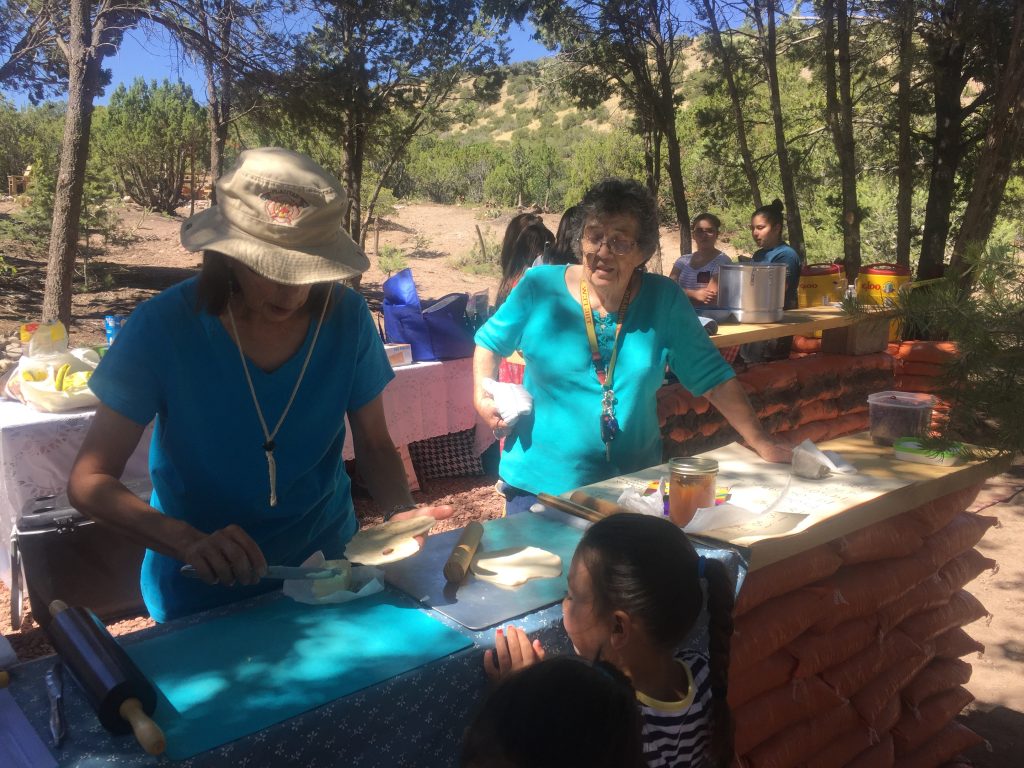
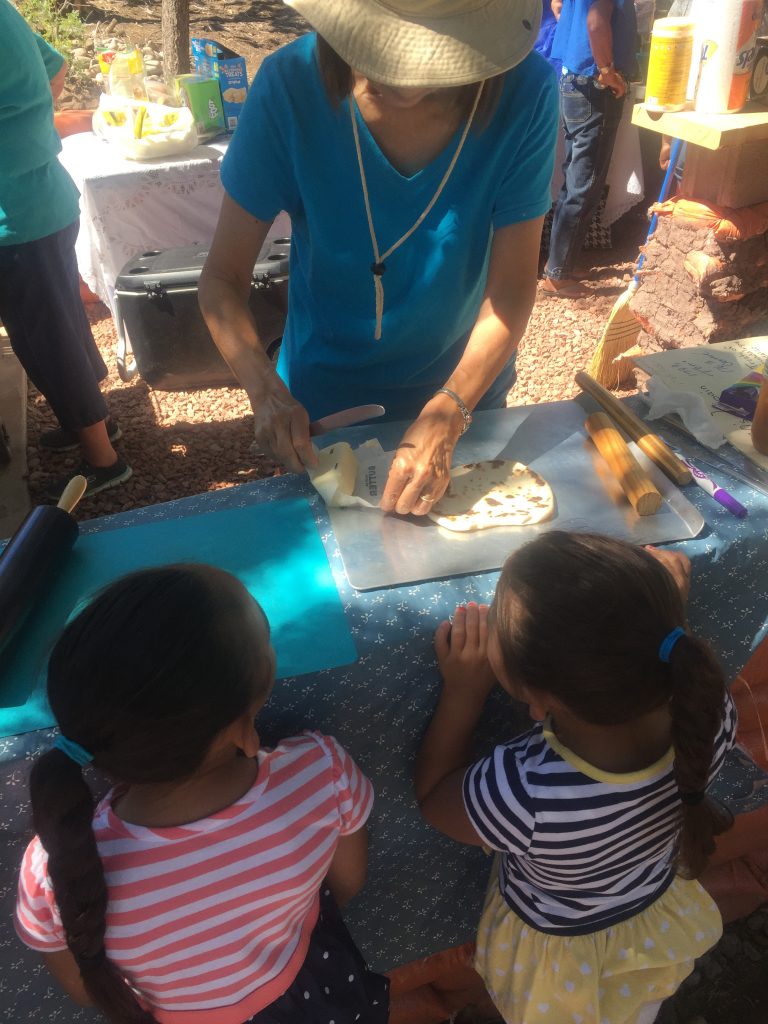
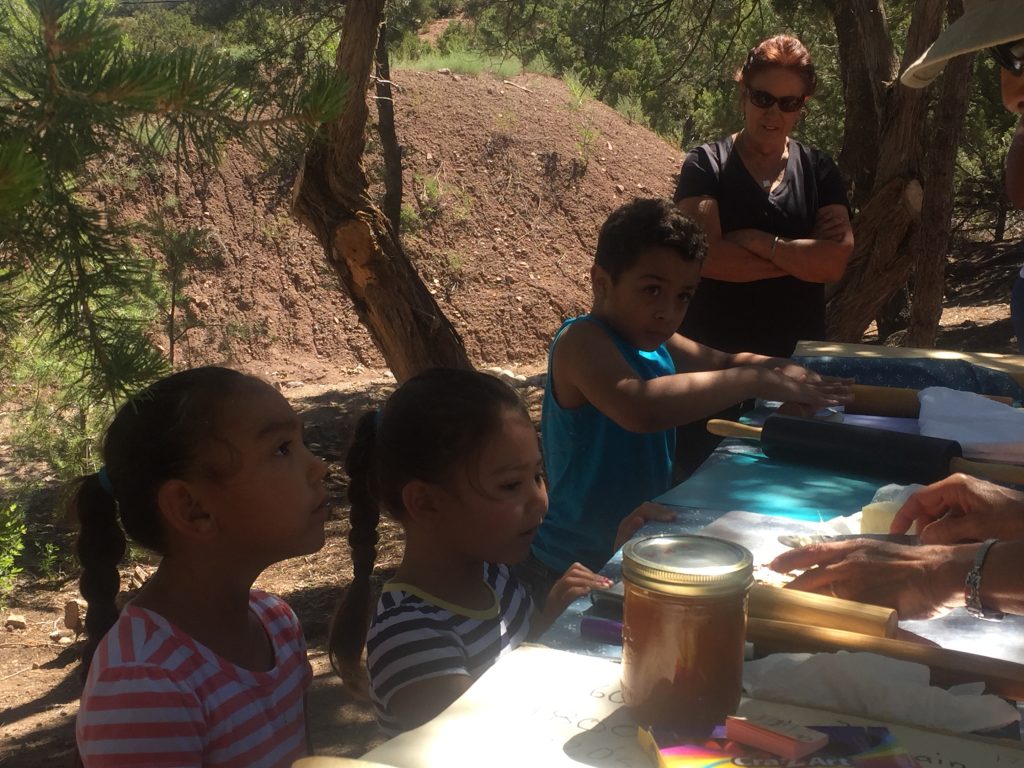
Pinon Pine Sap collection came next! We went up into the hills to gather sap from pinon pine trees. Guided by Kyle Skartwed and Michael Gonzales, we discovered trees with sap accumulation ready for harvest. Whoa – we wore the wrong shoes (flip flops) and one of my granddaughters stepped on a small cactus, so we all had to stop and ‘operate’ on her. Luckily one of the grandmothers on the tour had some excellent tweezers, so we were able to get the spines out from her foot. Everyone helped comfort her, and she bounced right back! We visited a number of trees to scrape sap, and appreciated Kyle and Michael holding the children up to where the children could scrape the sap into a bucket – messy and sticky and tricky as it was, sap gathering turned out to be one of the favorite activities of the children!
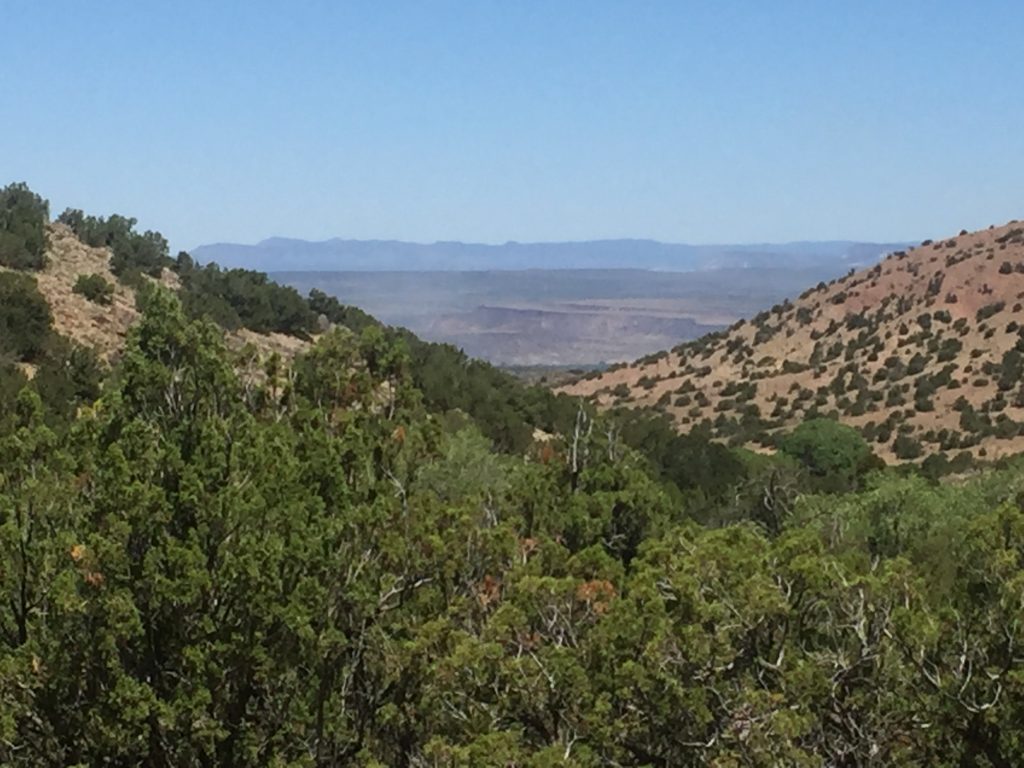
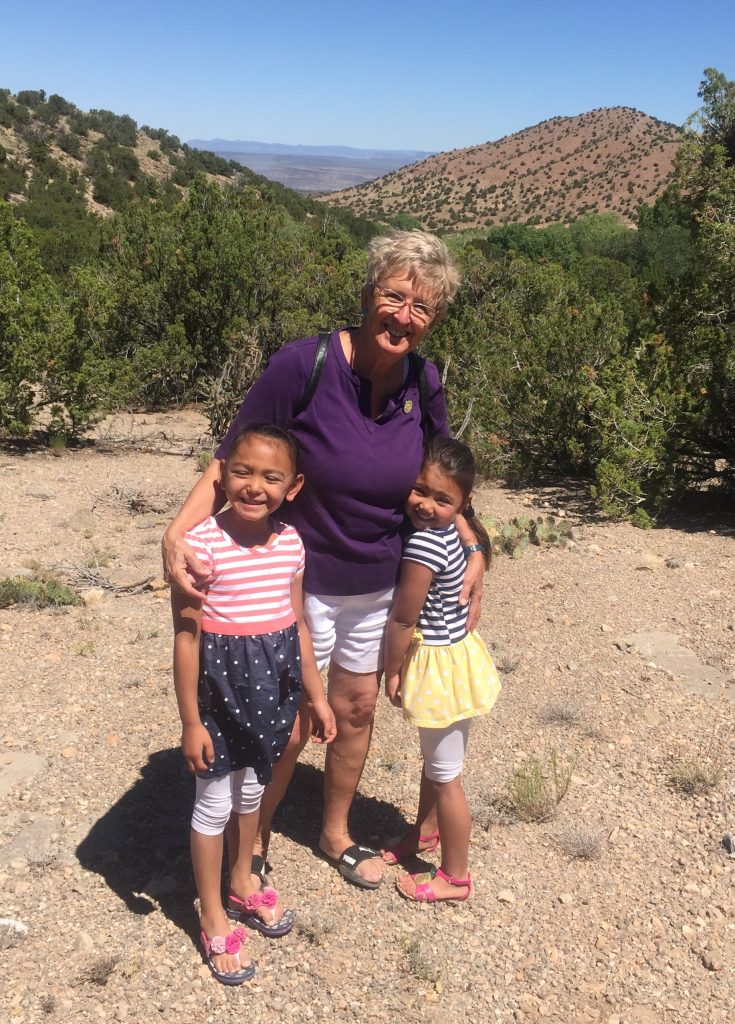
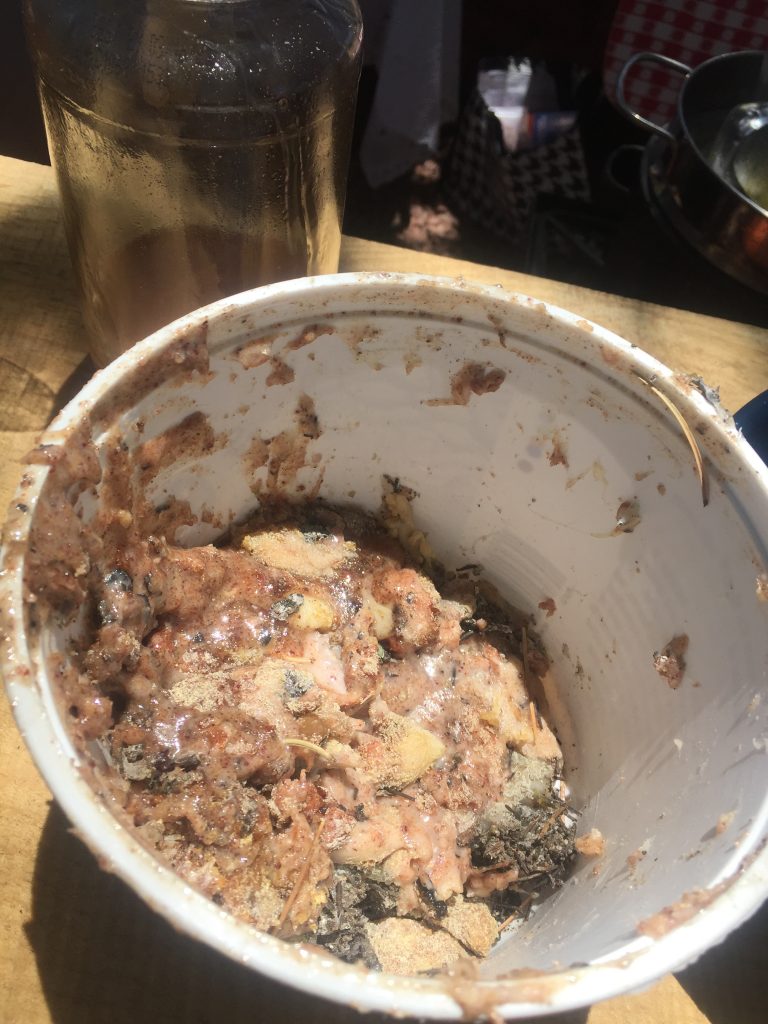
Kyle thoughtfully offered to take a family picture of us while we were up on the mountain, with a view northwest to the Mesa. He took a picture I will always treasure, as it so rare to have a picture of me with my granddaughters, since I take all the pictures of our adventures.
Water management and conservation followed our sap collection experience! After scraping and gathering the pinon pine sap, we walked downhill from the outdoor kitchen to the holding pond of the spring called Ojo del Oso (Spring of the Bear) and learned about water management from Rory Easeman, the Mayordomo of the Acequias of the San Antonio de Las Huertas Land Grant.
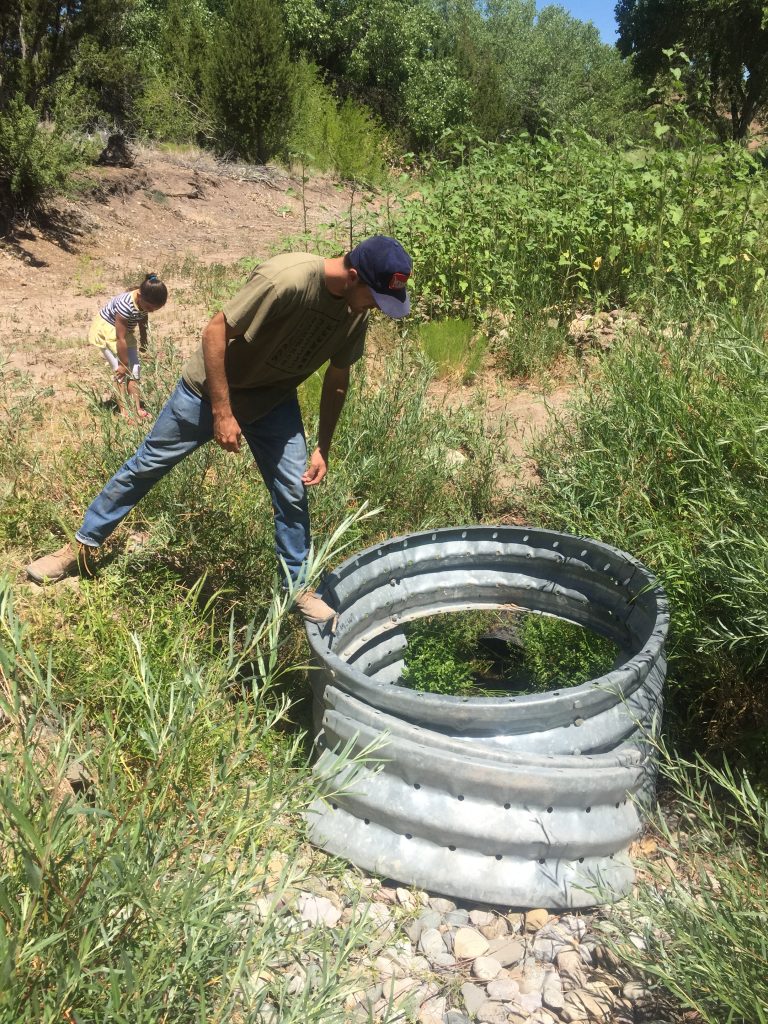
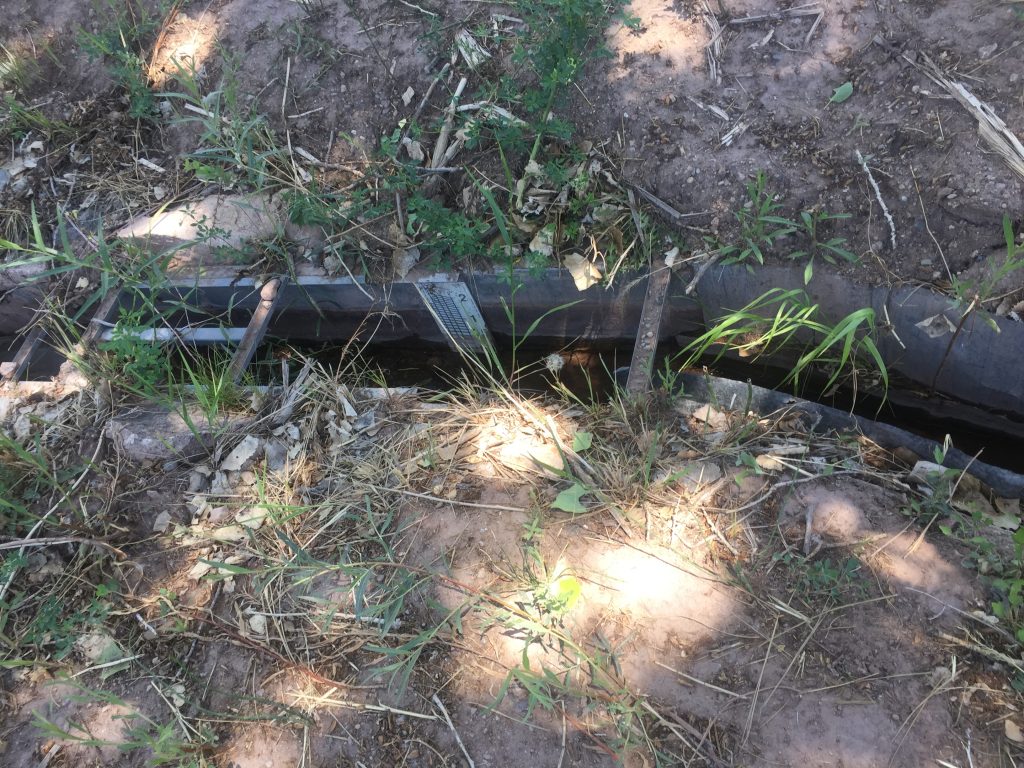
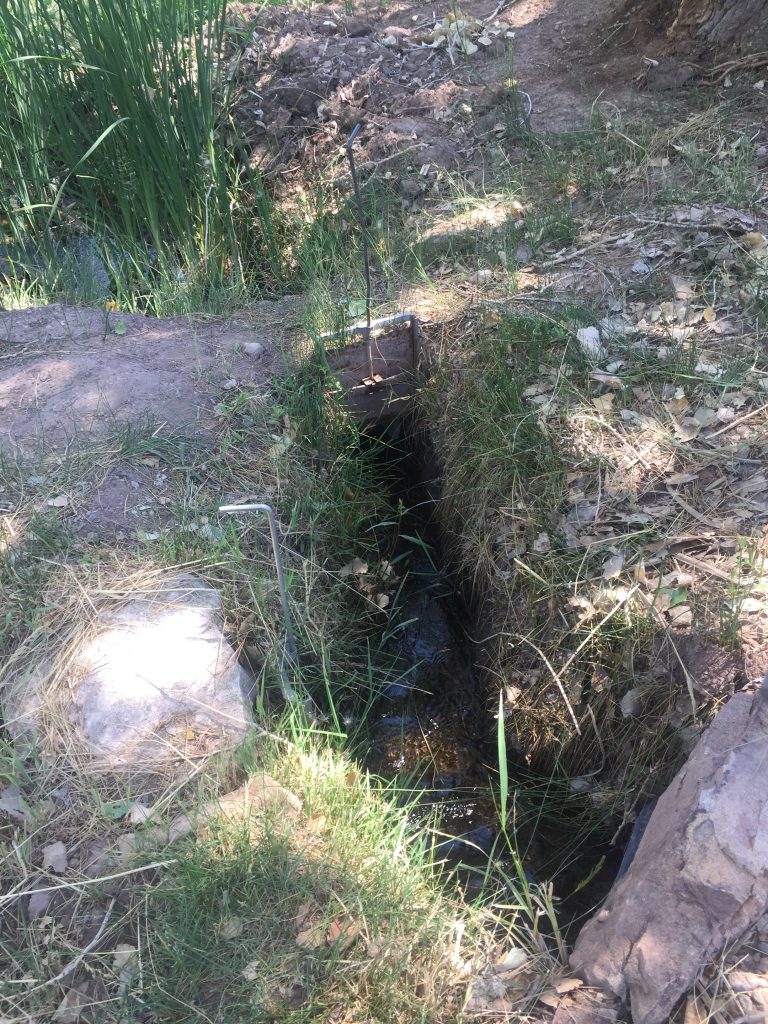
How fascinating to witness & hear water from the Ojo del Oso emerge, and see it diverted to the holding pond and then to the acequia system. Rory told us about the variations in water flow from year to year – last year there was very little water for the orchards and people who depend on the acequia system for their water…but this year (thanks to the snow pack) the water flow is 10 times the flow rate of last year, so now they have plenty of water and are thinking of ways to save the water for drier years.
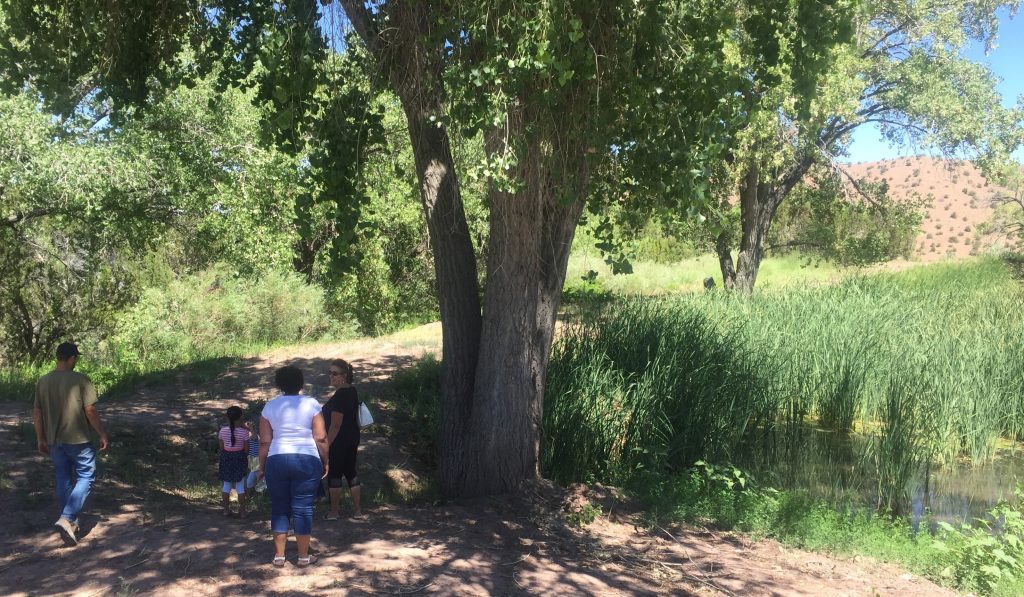
Rory also told us about the changes that have occurred in the management of the Acequia system – in more recent years the holding ponds (dry in winter) would be cleared of the season’s growth with a tractor…earlier (before the invention of such mechanized techniques) the dried growth would be burned, and that would create a hardened crust at the bottom of the holding pond, which seems to help slow the rate of water from sinking into the ground under the pond.
Cheese making was our next adventure. Rebecca had made preparations by adding the rennet (enzymes) to cow’s milk, and heating the mixture to the right temperature…when we joined her the mixture had solidified and was ready to be sliced & diced (one of the older girls did that), and then spooned into the cheesecloth-lined colander. Some of the older members of the group recalled that the curdling of the milk had been accomplished by a plant, and another recalled that a small animal would be killed and part of the stomach would be used to curdle the milk.
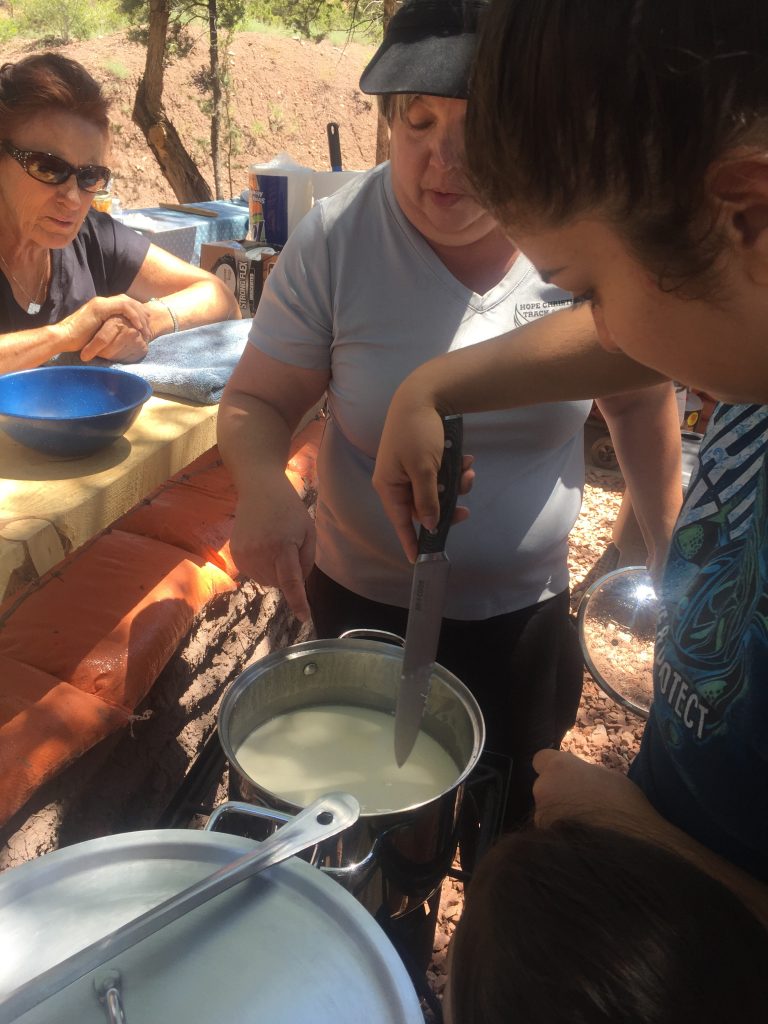
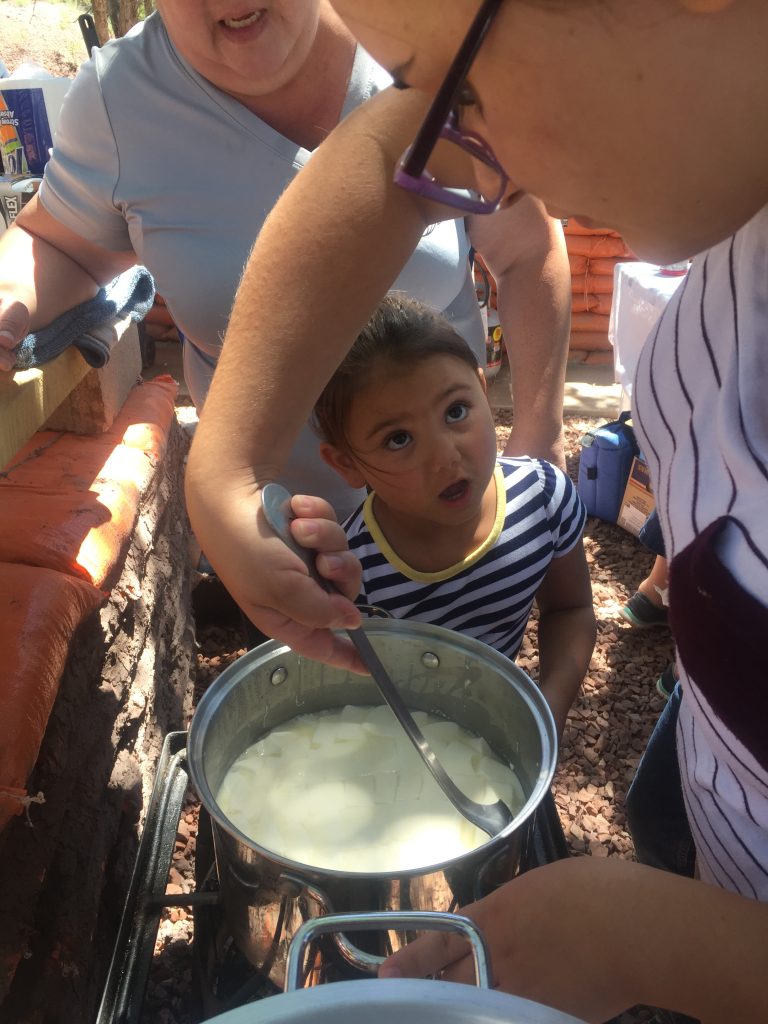
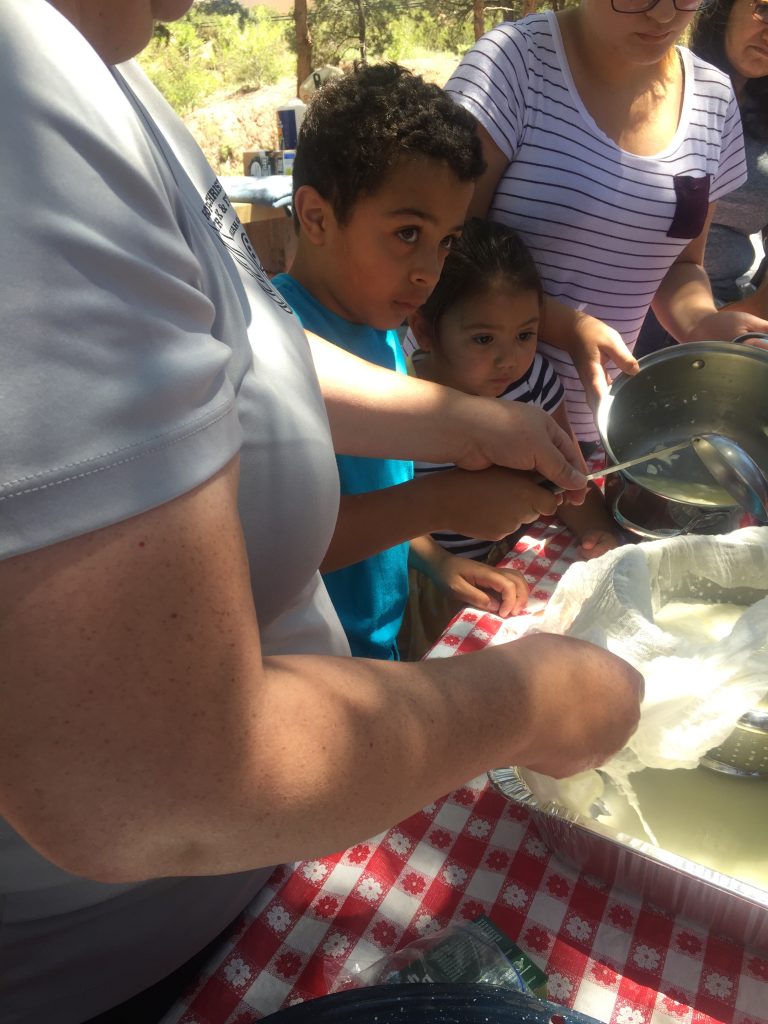
The whey drained out of the cheese (accompanied to recitations of the nursery rhyme “Little Miss Muffett…”). In order to drain more whey from the cheese, Rebecca showed us how to make the mixture ‘dance’ by holding the four corners of the cheese cloth and rocking it back and forth. Then she tied the corners together and hung the soon-to-be cheese from a stick and let the children take turns squeezing it – they LOVED this stage of cheese-making and were eager to take turns! Squeezing the cheese was a very popular activity…what fun that turned out to be!
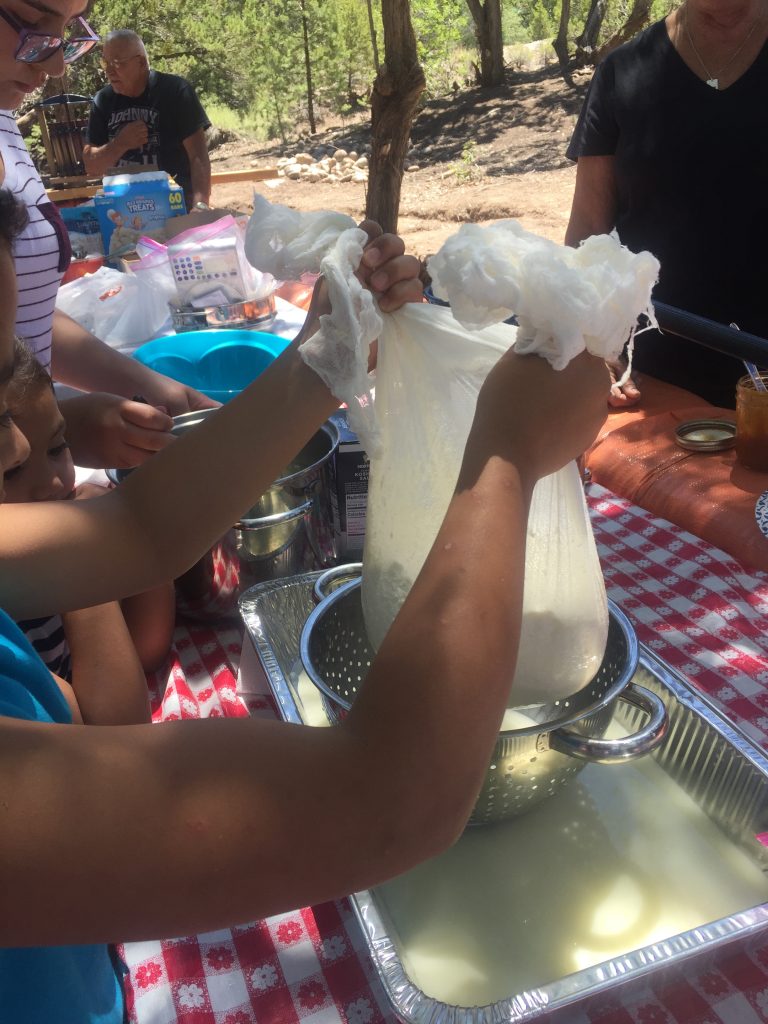
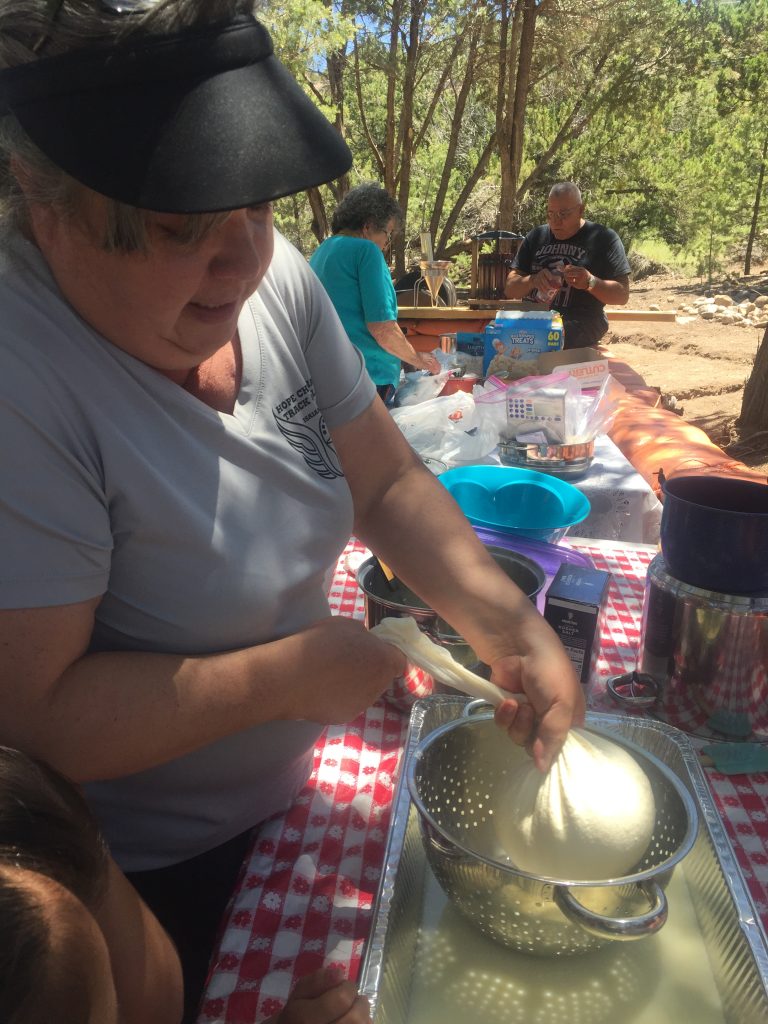
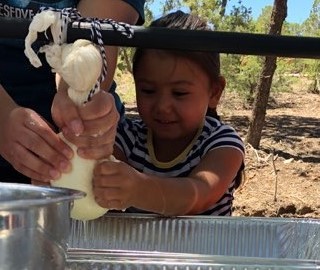
Lunch was yummy! We ate the tortillas we made, wrapped around carnitas that Ora made from brisket, plus the cheese we made, pico de gallo and fresh-picked sour pie cherries from an orchard on the land grant. We all sat around at the picnic tables and visited while we ate the delicious food – getting to know our hosts was a big part of the enjoyment.
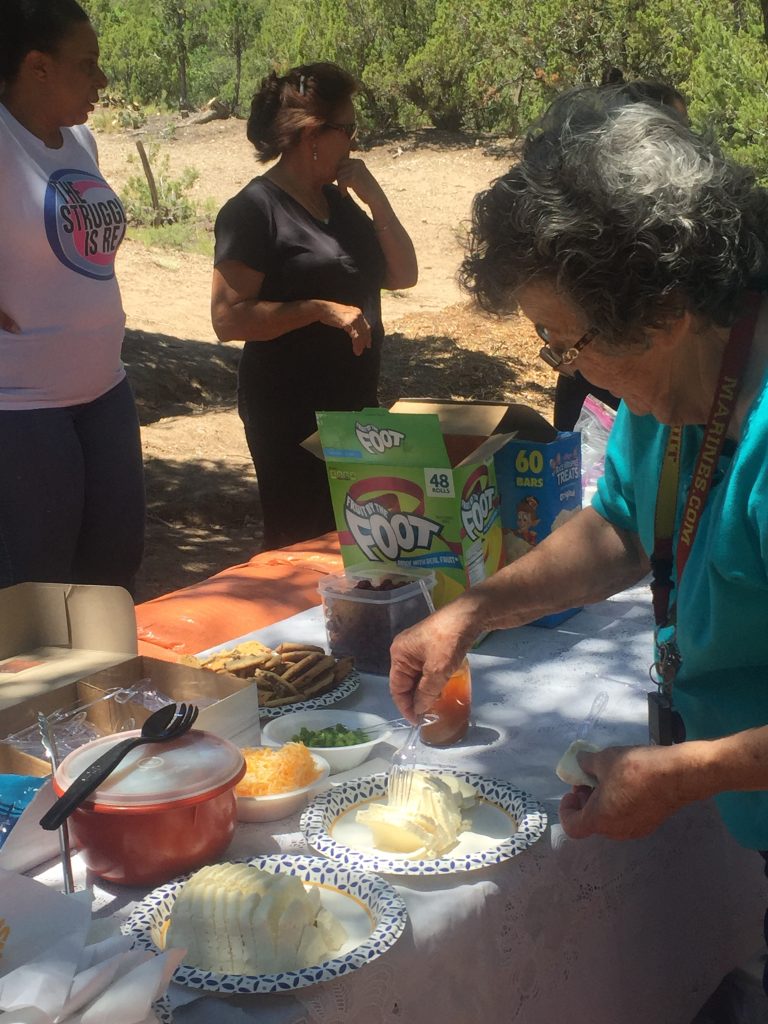
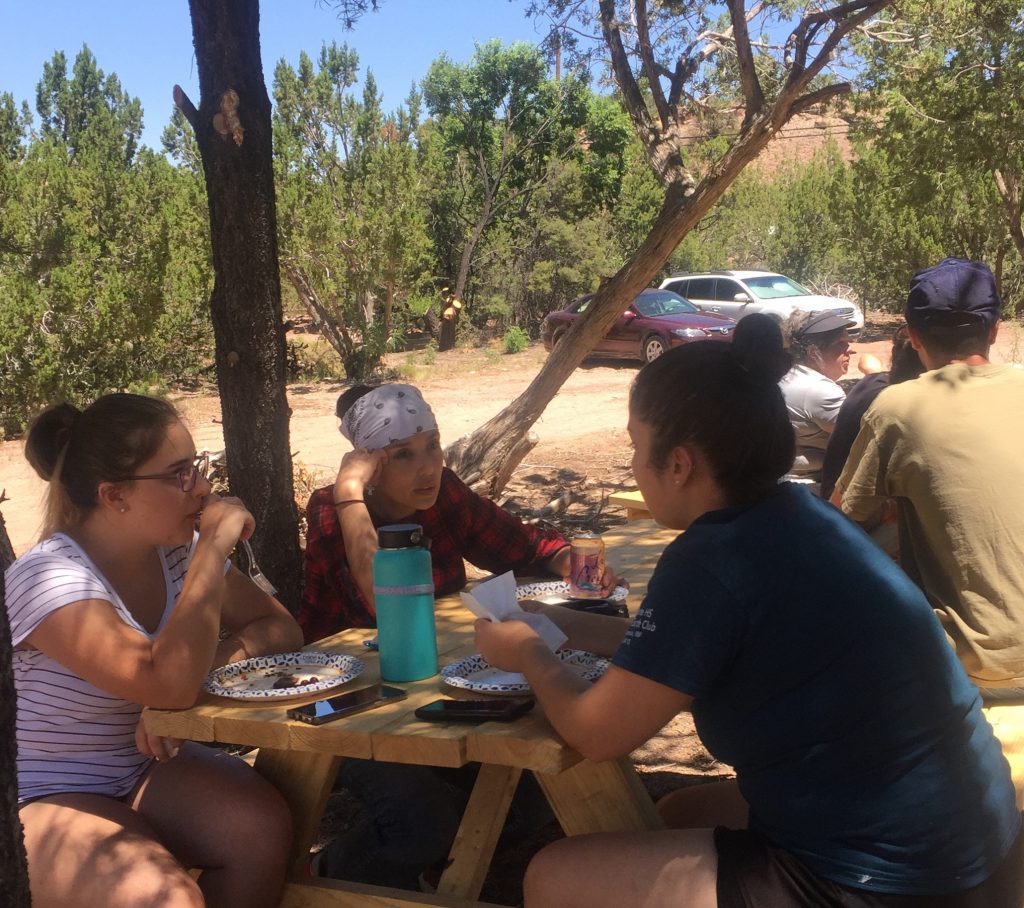
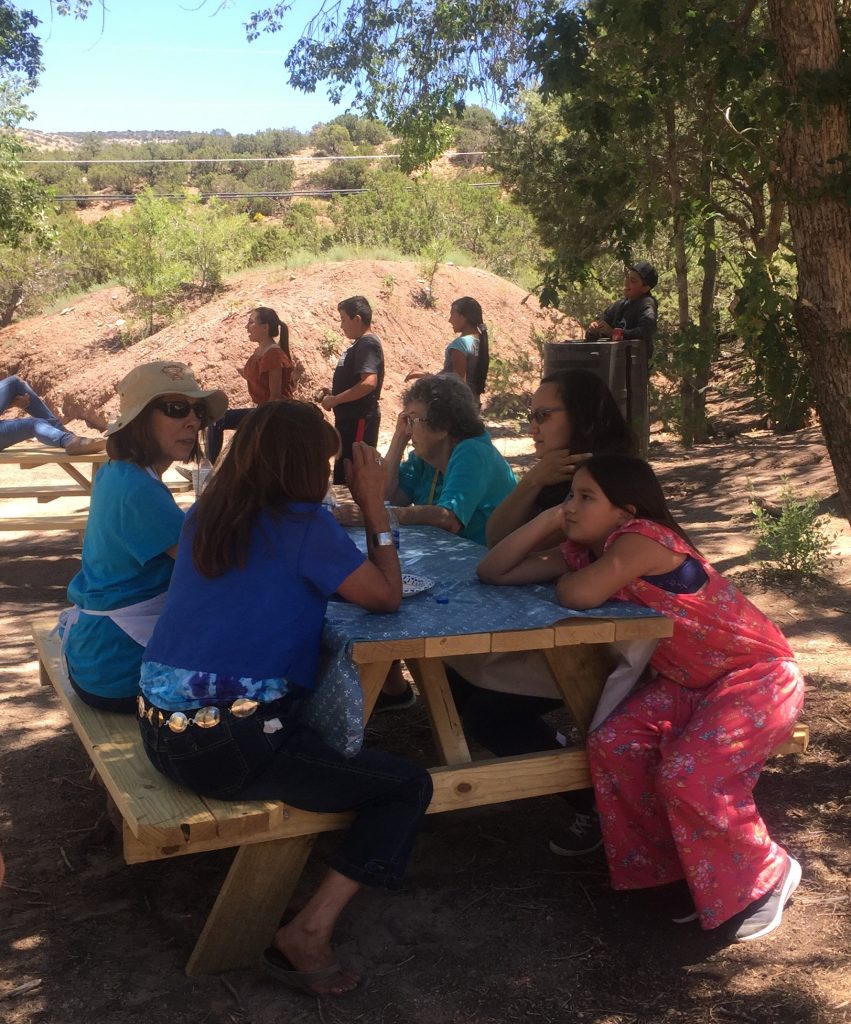
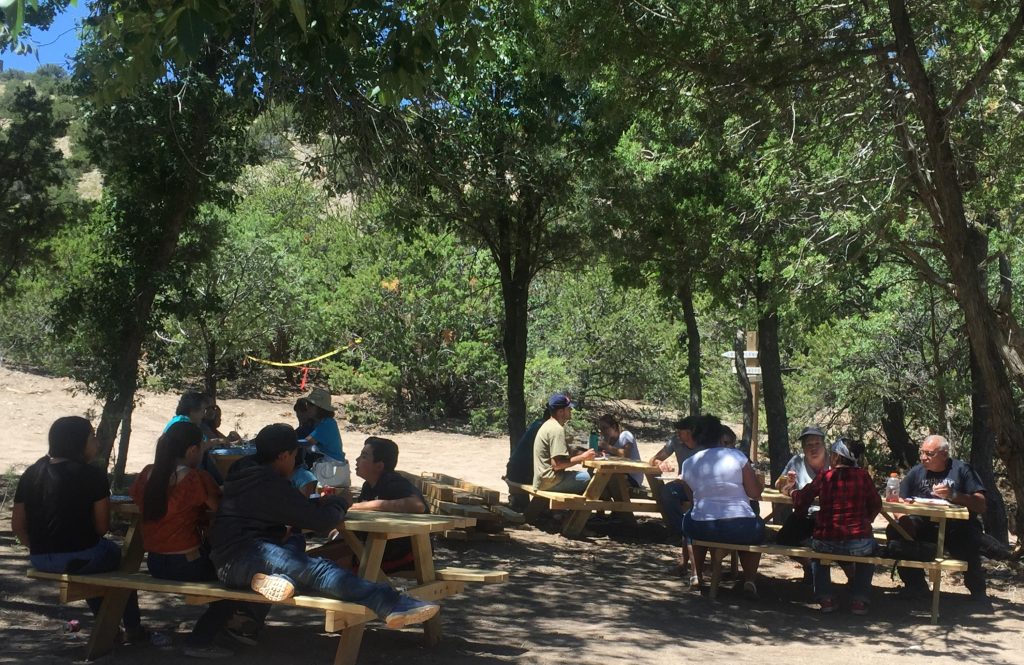
Pinon Pine Sap Salve making was amazing – after lunch, Rebecca mixed the heated pine sap that her husband Kyle Skartwed had previously collected (that she had melted at home in a crockpot outdoors and then sieved to remove bits of bark) with almond oil & some beeswax, and 40 drops of lavender oil.
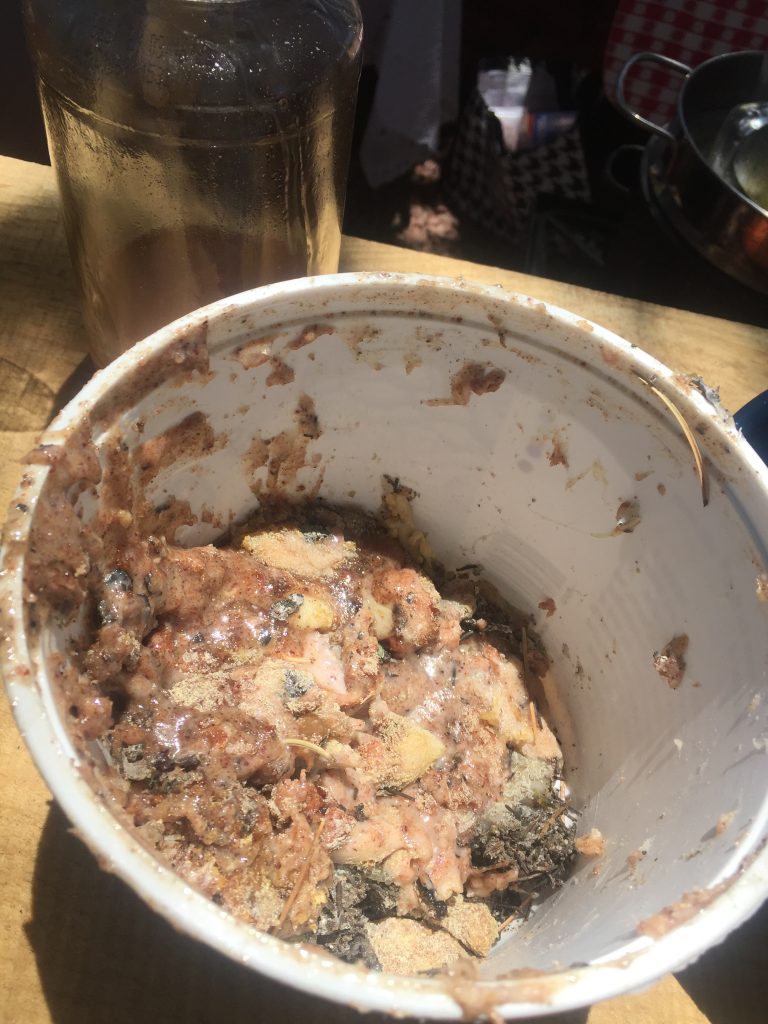
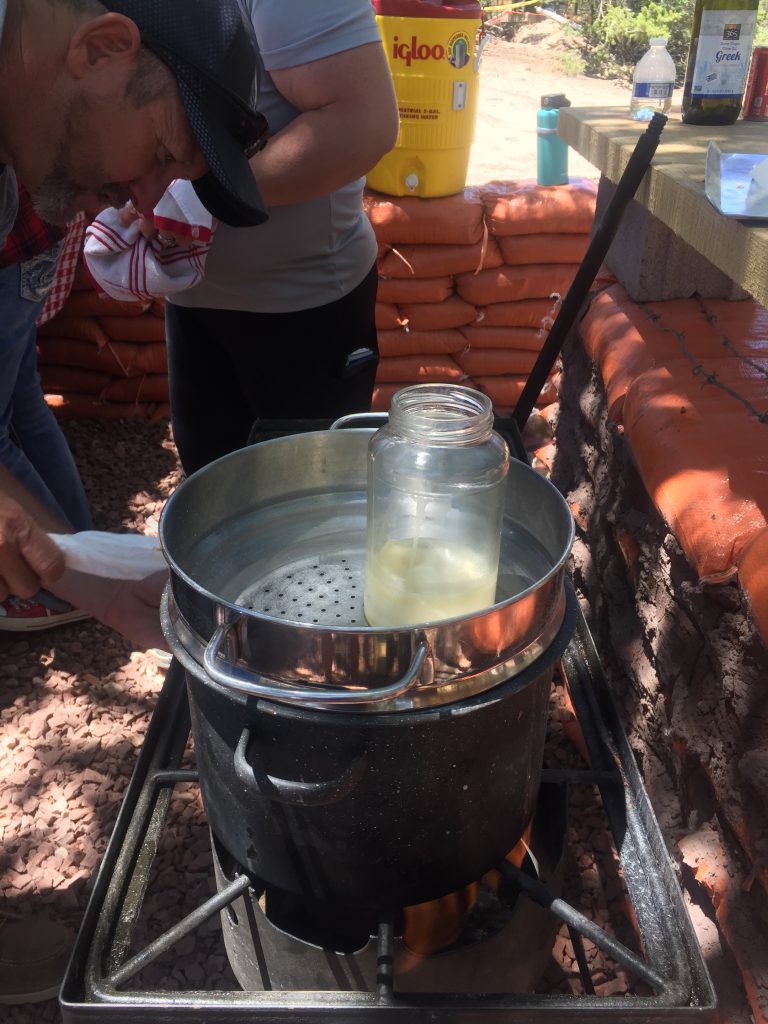
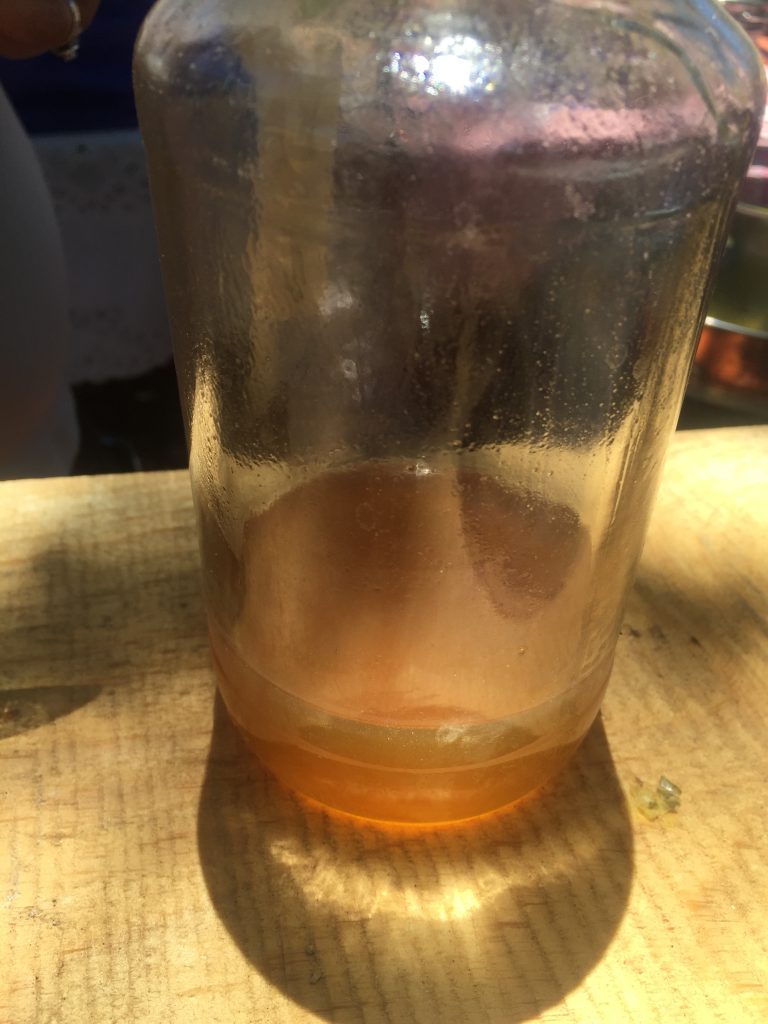
Venessa had brought about 40 little canisters with lids and one of the older girls poured the mixture into each of them, taking twice to go around. Once the salve in the containers had cooled enough, we were able to choose our own delicious-smelling sample, and head for the car and home.
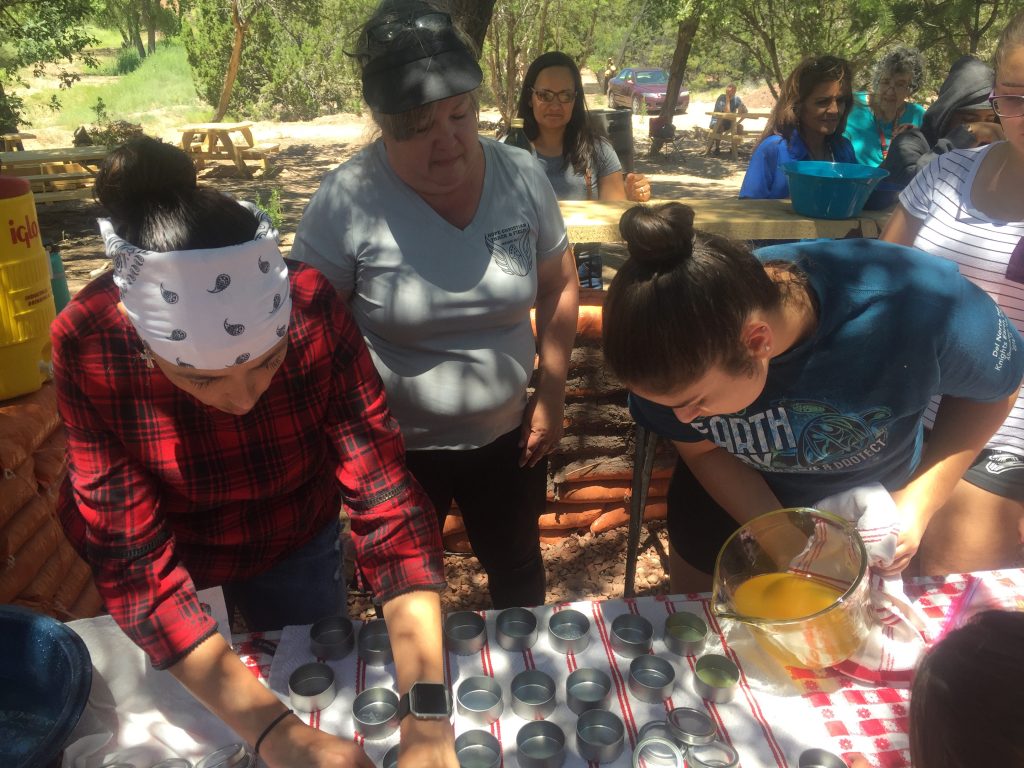
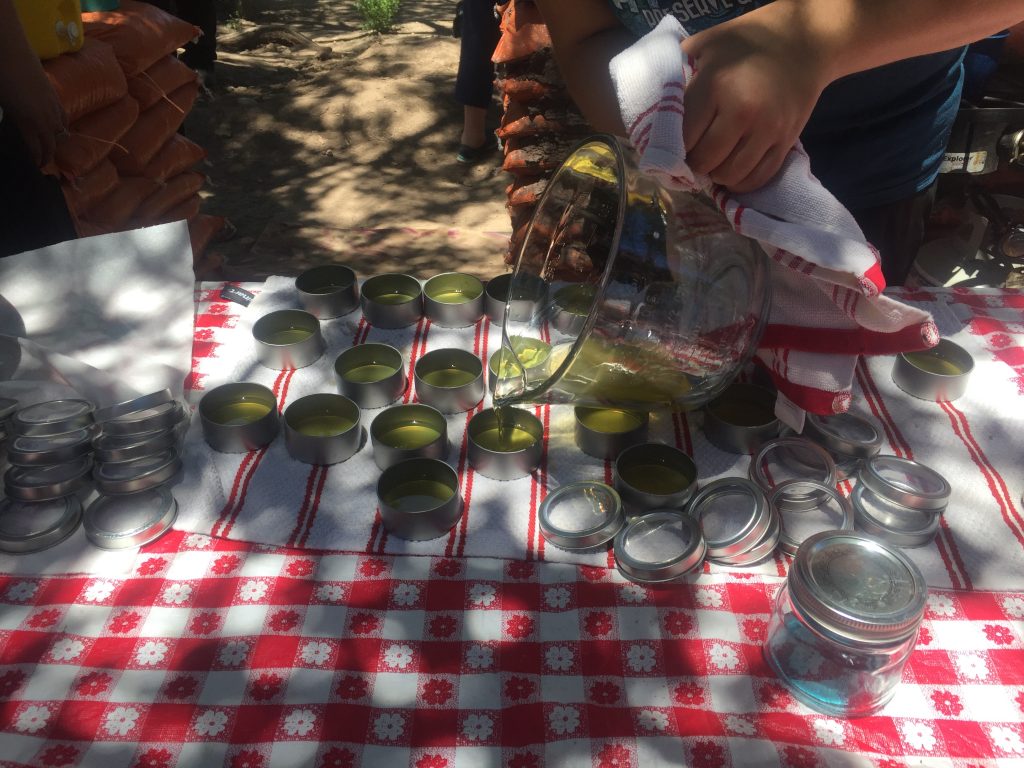
What a beautiful setting for our experience – outdoors and in the shaded picnic area that was a perfect temperature and provided us with the feeling of being close to nature. We will treasure the lovely family photo taken from up on the hill looking out to the north west, and we also have this happy group picture taken in the gazebo, built by Michael Gonzales (he is the friendly man on the far right of this picture).
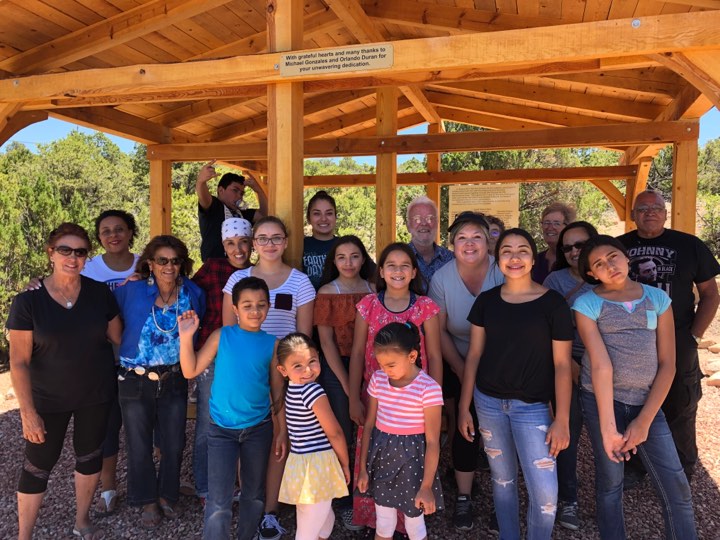
Our adventure lasted 4 hours – from 10am until after 2pm, and all the way home we talked about how much fun we had, how welcome we felt, and how much we learned! We met families and children from other Land Grants, and shared discoveries, skill building and experienced a wonderful feeling of community. Experiences such as these are to be treasured.
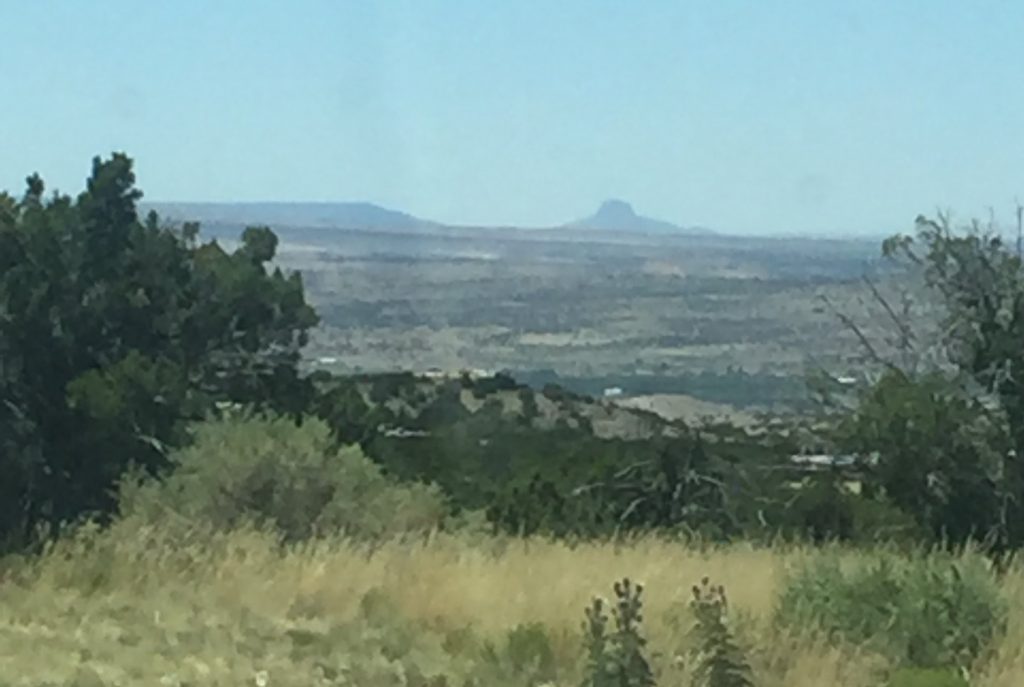
There wil be a practice for youth interested in the Danzante & Musico traditions at our Canon de Carnue Land Grant Hall:
12-2 on Saturday July 20 – Free BBQ to follow.
Activities and Crafts for youth are planned.
For more info, call Venessa Chavez Gutierrez at (505) 400-0940
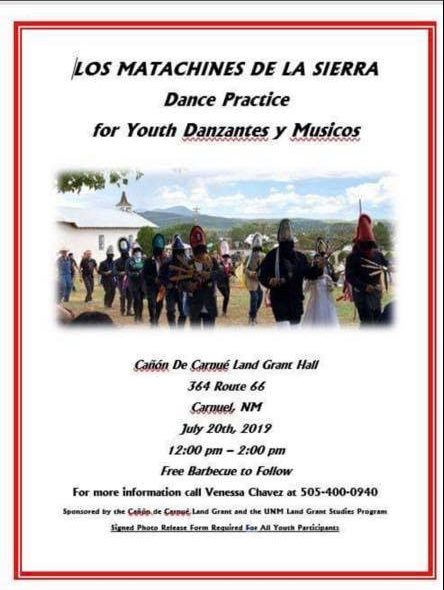
This important book will reveal legal approaches, based on domestic and international law, to alleviate the badges of servitude which still exist for those of indigenous Genízaro heritage. Examining the issues surrounding Genízaro identity, dignity and the law is the forthcoming book Slavery in the Southwest – coauthored by our Land Grant President Moises Gonzales and Bill Piatt, Law Professor Emeritus and NM native. Now available on Amazon.com…click here!
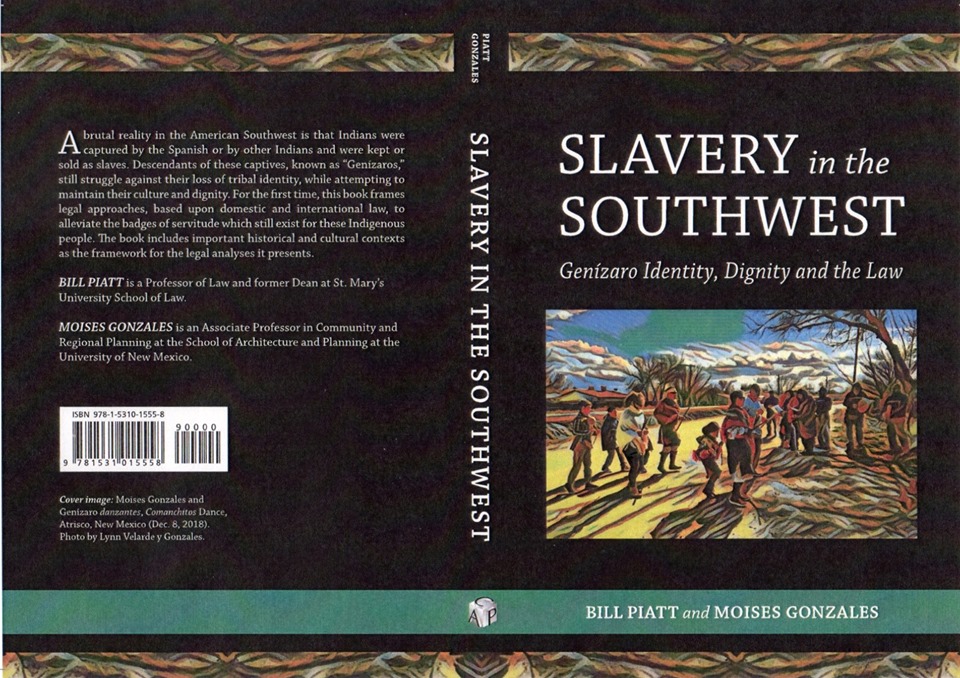
We were blessed to have a meeting in May with newly-elected Congresswoman Deb Haaland, who is taking an interest in issues relating to New Mexico Land Grants.
